|
|
|
Best Movie
|

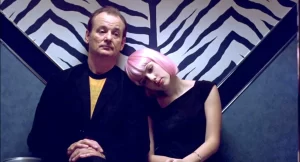 Lost in Translation – With moving lead performances by Bill Murray and Scarlett Johansson, assured and restrained direction from Sofia Coppola, and the stunning backdrop of Tokyo, Japan, Lost in Translation became an unexpectedly well-received breath of fresh air. Obviously, the young director has a famous surname to live up to, but with an insightful script (written as a lengthy sort of prose-poem), wonderful cinematography, the natural locations of otherworldy Tokyo, and the inspired casting that highlights the genuine chemistry between a comedic super-star and a young up-and-coming actress, Lost in Translation steps out from the umbrella of that name and becomes a unique and wonderfully moving tribute to the nature of friendship, love, and that happy-sad feeling that comes from spending two hours with wonderful characters who you don’t want to leave behind in the theatre – but that you wish were a part of your everyday life. –cm Lost in Translation – With moving lead performances by Bill Murray and Scarlett Johansson, assured and restrained direction from Sofia Coppola, and the stunning backdrop of Tokyo, Japan, Lost in Translation became an unexpectedly well-received breath of fresh air. Obviously, the young director has a famous surname to live up to, but with an insightful script (written as a lengthy sort of prose-poem), wonderful cinematography, the natural locations of otherworldy Tokyo, and the inspired casting that highlights the genuine chemistry between a comedic super-star and a young up-and-coming actress, Lost in Translation steps out from the umbrella of that name and becomes a unique and wonderfully moving tribute to the nature of friendship, love, and that happy-sad feeling that comes from spending two hours with wonderful characters who you don’t want to leave behind in the theatre – but that you wish were a part of your everyday life. –cm |
28 Days Later…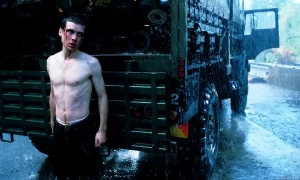 – Danny Boyle gave us a bit of a scare with films like A Life Less Ordinary and The Beach, but he clearly found his way back to the land of the independent and gave us the kind of scare we like with 28 Days Later… On the surface, it may look like a genre film – an English Dawn of the Dead – but there are scenes of great beauty and humanity, digital video is used to create images reminiscent of impressionist painting, and concepts like family, civilization, and ethics are brought in with considerable subtlety. –bg – Danny Boyle gave us a bit of a scare with films like A Life Less Ordinary and The Beach, but he clearly found his way back to the land of the independent and gave us the kind of scare we like with 28 Days Later… On the surface, it may look like a genre film – an English Dawn of the Dead – but there are scenes of great beauty and humanity, digital video is used to create images reminiscent of impressionist painting, and concepts like family, civilization, and ethics are brought in with considerable subtlety. –bg
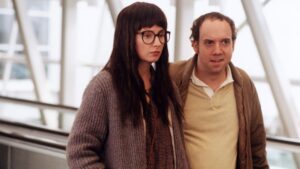 American Splendor – The screen adaptation of Harvey Pekar’s autobiographical comics series of the same name uses innovative visual techniques to move us in and out of the comics frame, most seamlessly in a scene in which the actor playing the main character walks from offstage into a videotaped episode of The David Letterman Show. Paul Giamatti inhabits Pekar, a depressive, ordinary guy “from off the streets of Cleveland,” with a complete vocabulary of voice and posture—it’s the kind of actor’s actor acting job you spend all your time wishing for at the bigger films. Hope Davis plays his girlfriend, Joyce Brabner, with needlelike precision. The drily reluctant way in which they pair up makes this the reverse-psychology date movie of the year: no thinking person could see this with you and not fall into your arms. Anti-romance, anti-glamour…this movie is anti-everything but good! –jy American Splendor – The screen adaptation of Harvey Pekar’s autobiographical comics series of the same name uses innovative visual techniques to move us in and out of the comics frame, most seamlessly in a scene in which the actor playing the main character walks from offstage into a videotaped episode of The David Letterman Show. Paul Giamatti inhabits Pekar, a depressive, ordinary guy “from off the streets of Cleveland,” with a complete vocabulary of voice and posture—it’s the kind of actor’s actor acting job you spend all your time wishing for at the bigger films. Hope Davis plays his girlfriend, Joyce Brabner, with needlelike precision. The drily reluctant way in which they pair up makes this the reverse-psychology date movie of the year: no thinking person could see this with you and not fall into your arms. Anti-romance, anti-glamour…this movie is anti-everything but good! –jy
 Lilja 4-Ever – This film, written and directed by Lukas Moodysson, takes a dark view of life in the former Soviet Union. It begins as Lilja (Oksana Akinshina) is left behind by her mother and mother’s boyfriend, who are emigrating to America. They promise to send for her; they don’t. What follows is a string of events that suck her down with inevitability, into darker and darker situations. Throughout her descent, Lilja remains good natured and trusting, befriending in her misery another hapless post-Soviet Union youngster, Volodya (Artyom Bogucharsky), whose parents haven’t left the country, but have no interest in caring for their son. We are left with the message that the adults are vicious, violent, self-serving and cruel, with no hope for their children, much less themselves or for a future. There is only hope in the youth, if they can escape being crushed by the actions of their elders. What is so heartbreaking about this movie, aside from Lilja’s grief and desperation, is that we know it is a true story, happening to thousands of women every day. –eeg Lilja 4-Ever – This film, written and directed by Lukas Moodysson, takes a dark view of life in the former Soviet Union. It begins as Lilja (Oksana Akinshina) is left behind by her mother and mother’s boyfriend, who are emigrating to America. They promise to send for her; they don’t. What follows is a string of events that suck her down with inevitability, into darker and darker situations. Throughout her descent, Lilja remains good natured and trusting, befriending in her misery another hapless post-Soviet Union youngster, Volodya (Artyom Bogucharsky), whose parents haven’t left the country, but have no interest in caring for their son. We are left with the message that the adults are vicious, violent, self-serving and cruel, with no hope for their children, much less themselves or for a future. There is only hope in the youth, if they can escape being crushed by the actions of their elders. What is so heartbreaking about this movie, aside from Lilja’s grief and desperation, is that we know it is a true story, happening to thousands of women every day. –eeg
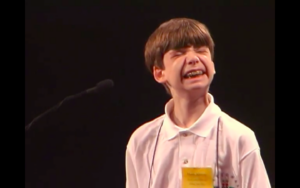 Spellbound – It sounds unbelievable, but it’s true. For audiences everywhere, the most enthralling, suspenseful, and agonizing 97 minutes this year were spent watching a documentary about eight kids competing in the 1999 National Spelling Bee. Following them through preliminary competitions and countless hours of exhausting preparation, director Jeffrey Blitz allows these charismatic youngsters and their families to tell their own tales of hope, yearning, and (for all but one) ultimate disappointment. Spellbound is the definitive expression of the American dream, proving that despite one’s heritage, social stratum, or personal limitations, success may still be achieved through discipline and hard work. Rarely is a documentary so entertaining, exciting, and inspiring that it can be considered a candidate for Best Movie alongside exceptional narrative films. –sc Spellbound – It sounds unbelievable, but it’s true. For audiences everywhere, the most enthralling, suspenseful, and agonizing 97 minutes this year were spent watching a documentary about eight kids competing in the 1999 National Spelling Bee. Following them through preliminary competitions and countless hours of exhausting preparation, director Jeffrey Blitz allows these charismatic youngsters and their families to tell their own tales of hope, yearning, and (for all but one) ultimate disappointment. Spellbound is the definitive expression of the American dream, proving that despite one’s heritage, social stratum, or personal limitations, success may still be achieved through discipline and hard work. Rarely is a documentary so entertaining, exciting, and inspiring that it can be considered a candidate for Best Movie alongside exceptional narrative films. –sc
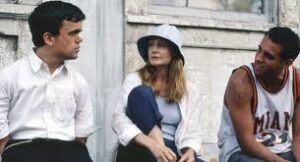 Station Agent, The – While the world around him sees him as a remarkable curiosity, Finbar McBride insists he’s just a regular guy. The charm of Thomas McCarthy’s directorial debut is in spending time with this regular guy as he moves from a solitary existence to part of a small circle of friends including a grief-stricken artist, and a greagarious coffee vendor. The gentle rhythms of the film which revolve around train spotting, and the ways we isolate ourselves, are a joy to the viewer. The cast, which includes Peter Dinklage, Bobby Cannavle, Patricia Clarkson, Raven Goodwin, and Michelle Williams, reveal their characters natrually. As the credits roll there are sure to be many audience members yearning to spend more time with this disparate and enchanting groups of friends. –mrc Station Agent, The – While the world around him sees him as a remarkable curiosity, Finbar McBride insists he’s just a regular guy. The charm of Thomas McCarthy’s directorial debut is in spending time with this regular guy as he moves from a solitary existence to part of a small circle of friends including a grief-stricken artist, and a greagarious coffee vendor. The gentle rhythms of the film which revolve around train spotting, and the ways we isolate ourselves, are a joy to the viewer. The cast, which includes Peter Dinklage, Bobby Cannavle, Patricia Clarkson, Raven Goodwin, and Michelle Williams, reveal their characters natrually. As the credits roll there are sure to be many audience members yearning to spend more time with this disparate and enchanting groups of friends. –mrc
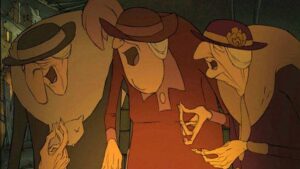 Triplets of Belleville, The – The Triplets Of Belleville is a rarity. A story told not through dialogue, but almost entirely through visuals leaving no doubt that the animation medium can and does, at times, surpass its live-action cousin in visual storytelling. The story is simple — a grandmother’s love for her grandson helps her overcome all obstacles to save him. The story starts in Paris. The Paris here has something akin with the Paris of Amelie — overly colorful and romantic; however, Triplets’ Paris is more nostalgic and gritty than that of Amelie, but stunning nonetheless. Soon we are taken along an absolutely beautiful trip across the ocean to the metropolis of Belleville, a city that seems to be a mishmash of everything European and North American, and meet the famous triplets of Belleview, who aid Grandma in her search her her grandson. This is a wonderful story of love, devotion and determination told with almost no spoken words of any language. Visually stunning and compellingly engrossing, The Triplets Of Belleville stand above most films within and without its genre with its heartfelt and honest albeit unusual story. –hs Triplets of Belleville, The – The Triplets Of Belleville is a rarity. A story told not through dialogue, but almost entirely through visuals leaving no doubt that the animation medium can and does, at times, surpass its live-action cousin in visual storytelling. The story is simple — a grandmother’s love for her grandson helps her overcome all obstacles to save him. The story starts in Paris. The Paris here has something akin with the Paris of Amelie — overly colorful and romantic; however, Triplets’ Paris is more nostalgic and gritty than that of Amelie, but stunning nonetheless. Soon we are taken along an absolutely beautiful trip across the ocean to the metropolis of Belleville, a city that seems to be a mishmash of everything European and North American, and meet the famous triplets of Belleview, who aid Grandma in her search her her grandson. This is a wonderful story of love, devotion and determination told with almost no spoken words of any language. Visually stunning and compellingly engrossing, The Triplets Of Belleville stand above most films within and without its genre with its heartfelt and honest albeit unusual story. –hs
|
|
Buried Treasure
|

Marion Bridge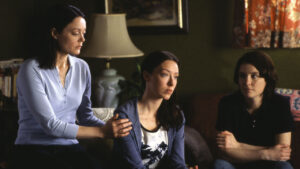 – With the assuredness of a seasoned vet, first-time director Wiebke von Carolsfeld has created a family drama that is filled with warmth, humor, drama, and refreshingly free of cliches. Working with a smart script by playwright Daniel McIvor, who adpated th screenplay from his own work, and a terrific cast of talented actors, von Carolsfeld brings the story of three sisters reunited at their mother’s deathbed, struggling to deal with the shared, hidden past that guides their lives. Molly Parker, Rebecca Jenkins, and Stacy Smith bring taut, honest performances to the three sisters, and the evocative setting of Cape Breton Isle brings forth both the isolation each endure, and the rural simplicity that keeps them together. Already championed by the Chlotrudis Society in the spring of 2003 when we presented the film at the Boston International Festival of Women’s Cinema, Marion Bridgedeserves a much wider audience and the exposure that a Buried Treasure nomination brings. –mrc – With the assuredness of a seasoned vet, first-time director Wiebke von Carolsfeld has created a family drama that is filled with warmth, humor, drama, and refreshingly free of cliches. Working with a smart script by playwright Daniel McIvor, who adpated th screenplay from his own work, and a terrific cast of talented actors, von Carolsfeld brings the story of three sisters reunited at their mother’s deathbed, struggling to deal with the shared, hidden past that guides their lives. Molly Parker, Rebecca Jenkins, and Stacy Smith bring taut, honest performances to the three sisters, and the evocative setting of Cape Breton Isle brings forth both the isolation each endure, and the rural simplicity that keeps them together. Already championed by the Chlotrudis Society in the spring of 2003 when we presented the film at the Boston International Festival of Women’s Cinema, Marion Bridgedeserves a much wider audience and the exposure that a Buried Treasure nomination brings. –mrc |
Dracula: Pages from a Virgin’s Diary – Commissioned by the Royal Winnipeg Ballet to film its stage production of Bram Stoker’s classic horror tale, Guy Maddin took his footage and gleefully ran wild with it in the editing room. Piling on the circa-1925 effects (iris-ins and outs, intertitles, superimpositions, one-color screen tints), he focused less on the choreography but preserved (and emphasized) the production’s grand, Mahler-drenched score. The results are like Nosferatu transformed into a hallucinatory silent musical, with the suave, striking Zhang Wei-Qiang in the title role. Equally innovative and seductive, you’ve never seen the legend of Dracula told remotely like this. –ck – Commissioned by the Royal Winnipeg Ballet to film its stage production of Bram Stoker’s classic horror tale, Guy Maddin took his footage and gleefully ran wild with it in the editing room. Piling on the circa-1925 effects (iris-ins and outs, intertitles, superimpositions, one-color screen tints), he focused less on the choreography but preserved (and emphasized) the production’s grand, Mahler-drenched score. The results are like Nosferatu transformed into a hallucinatory silent musical, with the suave, striking Zhang Wei-Qiang in the title role. Equally innovative and seductive, you’ve never seen the legend of Dracula told remotely like this. –ck
Love & Diane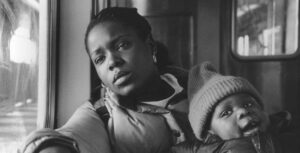 – Dworkin’s debut documentary immerses us in the life of a New York family living on public assistance and struggling against a history of drug abuse and foster care. Diane and her daughter Love are trying to reach a detente that will keep them together and ensure a home for Love’s baby. Dworkin daringly presents a two-and-a-half-hour epic of tension-filled exchanges, ground gained and lost again, in an intimate portrait of these brave, – Dworkin’s debut documentary immerses us in the life of a New York family living on public assistance and struggling against a history of drug abuse and foster care. Diane and her daughter Love are trying to reach a detente that will keep them together and ensure a home for Love’s baby. Dworkin daringly presents a two-and-a-half-hour epic of tension-filled exchanges, ground gained and lost again, in an intimate portrait of these brave,
outspoken, and complex women.– djy
Melvin Goes to Dinner – Hailed by the BBC as “an Annie Hall for the 21st Century,” Melvin Goes to Dinner is the first feature directed by television writer and comic actor Bob Odenkirk (“Mr. Show,” Run Ronnie Run!). Using relaxed, unpretentious, uncomfortably real dialogue (penned by lead actor Michael Blieden, based on his play “Phyrogiants!”) this little kumquat of a film is at once tart and sweet, illustrating how modern adults can bond over the ways they alienate themselves. When our friends reveal to us unseemly, intimate secrets about themselves, we glimpse the humanity behind their icy mask of pride, and when we watch Melvin and his friends do the same, we’re able to reclaim a little of our own humanity too. –sc – Hailed by the BBC as “an Annie Hall for the 21st Century,” Melvin Goes to Dinner is the first feature directed by television writer and comic actor Bob Odenkirk (“Mr. Show,” Run Ronnie Run!). Using relaxed, unpretentious, uncomfortably real dialogue (penned by lead actor Michael Blieden, based on his play “Phyrogiants!”) this little kumquat of a film is at once tart and sweet, illustrating how modern adults can bond over the ways they alienate themselves. When our friends reveal to us unseemly, intimate secrets about themselves, we glimpse the humanity behind their icy mask of pride, and when we watch Melvin and his friends do the same, we’re able to reclaim a little of our own humanity too. –sc
Ten – Director Abbas Kiarostami (A Taste of Cherry) mounts a video camera on the dashboard of a late-model automobile and turns it inward to relate in real time the stories of an Iranian woman and the people who ride with her. Through ten discrete and intimate conversations with her son, her sister, and the women she meets as she goes around the city, the director details her life and the lives of those around her. No less fascinating are the glimpses we get of Tehran and its citizens as they too go through their days. –jp – Director Abbas Kiarostami (A Taste of Cherry) mounts a video camera on the dashboard of a late-model automobile and turns it inward to relate in real time the stories of an Iranian woman and the people who ride with her. Through ten discrete and intimate conversations with her son, her sister, and the women she meets as she goes around the city, the director details her life and the lives of those around her. No less fascinating are the glimpses we get of Tehran and its citizens as they too go through their days. –jp |
|
Best Director
|

Sofia Coppola for Lost in Translation – After her stunning debut, The Virgin Suicides (for which she earned a Best Adapted Screenplay Chlotrudis nomination), Sofia Coppola’s second feature finds her even more in control. Her direction is deft and economical and she elicits fantastic performances from her leads: Scarlett Johansson in a career defining role and Bill Murray in a career changing one. Coppola wrote, directed and produced the ambitious yet simple story of two Americans figuratively (and occasionally actually) lost in Tokyo. Lost in Translation is a wonderfully quirky and touching portrait of one unique friendship. –nh for Lost in Translation – After her stunning debut, The Virgin Suicides (for which she earned a Best Adapted Screenplay Chlotrudis nomination), Sofia Coppola’s second feature finds her even more in control. Her direction is deft and economical and she elicits fantastic performances from her leads: Scarlett Johansson in a career defining role and Bill Murray in a career changing one. Coppola wrote, directed and produced the ambitious yet simple story of two Americans figuratively (and occasionally actually) lost in Tokyo. Lost in Translation is a wonderfully quirky and touching portrait of one unique friendship. –nh |
Shari Springer Berman & Robert Pulcini for American Splendor – Berman and Pulcini create an engaging story of an average life, that of comic book writer Harvey Pekar. Using a unique combination of acted scenes, comic book visuals, commentary by the real-life subjects, and old TV footage, the film slips between several planes of reality. Who is the real Harvey and why does he matter? is the question asked by the directors. –djy & Robert Pulcini for American Splendor – Berman and Pulcini create an engaging story of an average life, that of comic book writer Harvey Pekar. Using a unique combination of acted scenes, comic book visuals, commentary by the real-life subjects, and old TV footage, the film slips between several planes of reality. Who is the real Harvey and why does he matter? is the question asked by the directors. –djy
Danny Boyle for 28 Days Later… – Boyle’s meteoric rise as hyper-active Bad Boy of British Cinema seemed to tumble a bit when (inexplicably) critics did not fall in love with this latest effort. The biggest complaint seemed to be that it was derivative of previous horror films. Well, duh. It’s called “homage.” Look it up. Boyle continues to display his gifts for telling a disturbing story tinged with appropriate momenst of pathos in this story of a virus that infects people, alarmingly quickly, with a psychotic rage that makes them want to kill everything in sight. Alex Garland’s terrific screenplay and Boyle’s thoughtful treatment of it make this one of the most provocative horror films of recent memory, with ample commentary, should one choose to recognize it, on contemporary expressions of misogyny, misanthropism, political correctness, enviornmental warfare, and the loss of civility and rise of senseless violence in society. The immediacy of death, the intense fear of which might inspire us to kill, is captured exquisitely in this viscerally- harrowing and visually-haunting film, one of the best of the year.–pa for 28 Days Later… – Boyle’s meteoric rise as hyper-active Bad Boy of British Cinema seemed to tumble a bit when (inexplicably) critics did not fall in love with this latest effort. The biggest complaint seemed to be that it was derivative of previous horror films. Well, duh. It’s called “homage.” Look it up. Boyle continues to display his gifts for telling a disturbing story tinged with appropriate momenst of pathos in this story of a virus that infects people, alarmingly quickly, with a psychotic rage that makes them want to kill everything in sight. Alex Garland’s terrific screenplay and Boyle’s thoughtful treatment of it make this one of the most provocative horror films of recent memory, with ample commentary, should one choose to recognize it, on contemporary expressions of misogyny, misanthropism, political correctness, enviornmental warfare, and the loss of civility and rise of senseless violence in society. The immediacy of death, the intense fear of which might inspire us to kill, is captured exquisitely in this viscerally- harrowing and visually-haunting film, one of the best of the year.–pa
Claire Denis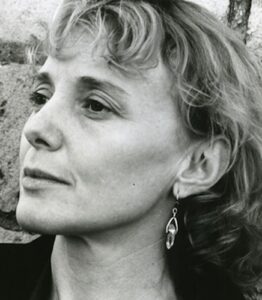 for Friday Night Every moment in Friday Night is carefully constructed through all of the elements of filmmaking – editing, soundtrack, cinematography, acting, etc. – pointing the true excellence of the film comes from the power of Denis’ direction. Buried so deeply in the emotional state of the main character the audience is swept through one night in her life as she works through her fears of commitment. A perfect combination of Denis’ earlier works including poetic Beau Travail (for which Denis received her first Chlotrudis nomination for diretion at the 7th Annual Awards), and the intense No Fear, No Die. –im for Friday Night Every moment in Friday Night is carefully constructed through all of the elements of filmmaking – editing, soundtrack, cinematography, acting, etc. – pointing the true excellence of the film comes from the power of Denis’ direction. Buried so deeply in the emotional state of the main character the audience is swept through one night in her life as she works through her fears of commitment. A perfect combination of Denis’ earlier works including poetic Beau Travail (for which Denis received her first Chlotrudis nomination for diretion at the 7th Annual Awards), and the intense No Fear, No Die. –im
David Gordon Green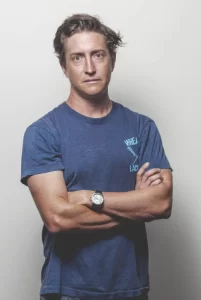 for All the Real Girls – From the director of George Washington (nominated in four categories in 2001), comes a story of small town life and first love. Visceral and from the heart, All the Real Girls is the story of Paul, the local ladies who finally falls for a real girl: Noel, his best friend’s sister, newly returned from boarding school. Green shoots his film with an appreciation for being young and in love, and far from being hackneyed, this director allows his characters to have long, quiet conversations during long, quiet shots, revealing their vulnerability and naïve idealism without judgement. –eeg for All the Real Girls – From the director of George Washington (nominated in four categories in 2001), comes a story of small town life and first love. Visceral and from the heart, All the Real Girls is the story of Paul, the local ladies who finally falls for a real girl: Noel, his best friend’s sister, newly returned from boarding school. Green shoots his film with an appreciation for being young and in love, and far from being hackneyed, this director allows his characters to have long, quiet conversations during long, quiet shots, revealing their vulnerability and naïve idealism without judgement. –eeg
Lukas Moodysson for Lilja 4-Ever – Leaping far from the mood of his earlier Together, Moodysson takes us to a former Soviet republic in which his characters carry on an existence where hope is relegated only to fantasies. The perspective of the film is very straightforward: we may not be looking through the eyes of the sixteen-year-old protagonist, but everything we see is based on her worldview. No one is to be trusted, adults are evil, selfish caricatures, and mistakes are all someone else’s fault. In spite of our awareness of this, we are drawn in and empathize with Lilja, hoping she can find a way through her troubles. –bg for Lilja 4-Ever – Leaping far from the mood of his earlier Together, Moodysson takes us to a former Soviet republic in which his characters carry on an existence where hope is relegated only to fantasies. The perspective of the film is very straightforward: we may not be looking through the eyes of the sixteen-year-old protagonist, but everything we see is based on her worldview. No one is to be trusted, adults are evil, selfish caricatures, and mistakes are all someone else’s fault. In spite of our awareness of this, we are drawn in and empathize with Lilja, hoping she can find a way through her troubles. –bg
Lynne Ramsay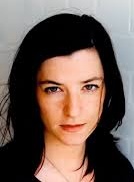 for Morvern Callar Lynne Ramsey’s second film proves that she her success with her debut film Ratchatcher was no fluke.Morvern Callar is a sweeter film, but no less intense. Her use of an engaging soundtrack, rich colors and lighting, beautiful cinematography that moves from claustrophobic interiors to open Spanish landscapes, and her direction of the central force to the film, Samantha Morton’s Morvern, show that we have a new member of the cinema elite. –im for Morvern Callar Lynne Ramsey’s second film proves that she her success with her debut film Ratchatcher was no fluke.Morvern Callar is a sweeter film, but no less intense. Her use of an engaging soundtrack, rich colors and lighting, beautiful cinematography that moves from claustrophobic interiors to open Spanish landscapes, and her direction of the central force to the film, Samantha Morton’s Morvern, show that we have a new member of the cinema elite. –im |
|
Best Actress
|

Sarah Polley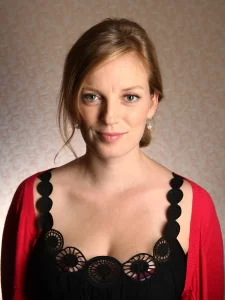 for the role of Ann in My Life Without Me – At the age of 25, Canadian actress Sarah Polley has already attained veteran status in the film world and she proves it is well earned in her fourth Chlotrudis Awards nomination. (Polley was previously nominated for The Claim, Go, and The Sweet Hereafter.) As terminally ill Ann, a young woman struggling to make ends meet and to provide an easy transition for her family after her death, Polley exudes a level of dignity and grace difficult to maintain in such extreme circumstances. As Ann tries to balance the needs of her loved ones with her desire to experience what she has previously denied herself, Polley subtly supports and fuels every other actor’s performance in the film. In a role as challenging yet unassuming as this one, few actresses could have pulled it off, but it is now clear that Sarah Polley will continue to captivate and astound us. –sc for the role of Ann in My Life Without Me – At the age of 25, Canadian actress Sarah Polley has already attained veteran status in the film world and she proves it is well earned in her fourth Chlotrudis Awards nomination. (Polley was previously nominated for The Claim, Go, and The Sweet Hereafter.) As terminally ill Ann, a young woman struggling to make ends meet and to provide an easy transition for her family after her death, Polley exudes a level of dignity and grace difficult to maintain in such extreme circumstances. As Ann tries to balance the needs of her loved ones with her desire to experience what she has previously denied herself, Polley subtly supports and fuels every other actor’s performance in the film. In a role as challenging yet unassuming as this one, few actresses could have pulled it off, but it is now clear that Sarah Polley will continue to captivate and astound us. –sc |
Oksana Akinshina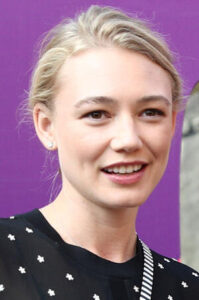 for the role of Lilja in Lilja 4-Ever – Lukas Moodysson’s unflinching study of teenage abandonment and prostitution in a former Soviet Republic centers on Lilja, who is as likable and complex a protagonist as those in the director’s other features. However, her fate is less sunny, as she struggles to survive in an increasingly brutal world where her freedom is gradually obliterated. As Lilja, Akinshina (who had only acted in one prior feature, Sergei Bodrov Jr.’s Sisters) gives an incredibly natural and nuanced performance. Scenes with her young co-star Artyom Bogucharsky are particularly affecting in their sensitivity and honesty. –ck for the role of Lilja in Lilja 4-Ever – Lukas Moodysson’s unflinching study of teenage abandonment and prostitution in a former Soviet Republic centers on Lilja, who is as likable and complex a protagonist as those in the director’s other features. However, her fate is less sunny, as she struggles to survive in an increasingly brutal world where her freedom is gradually obliterated. As Lilja, Akinshina (who had only acted in one prior feature, Sergei Bodrov Jr.’s Sisters) gives an incredibly natural and nuanced performance. Scenes with her young co-star Artyom Bogucharsky are particularly affecting in their sensitivity and honesty. –ck
Keisha Castle-Hughes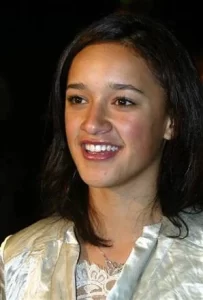 for the role of Paikea “Pai” Apirana in Whale Rider – This astonishingly-talented young actress has already been recognized with an Academy Award nomination for Best Actress (by far the youngest nominee ver in this category), so there doesn’t seem much more to say. In this moving tory of a contemporary Maori community struggling to hold onto its heritage, Castle-Hughes plays Pai, a girl who wishes to learn all of the ancient raditional warrior skills usually reserved for boys. She is doted on by her grandfather, but he refuses to let her participate in the traditional training school. Pai’s motivation is complex: she wants to please her grandfather and family, but her strong will convinces her she is also meant to be a leader of her people. A scene in which she recites a speech to honor her grandfather at a school assembly, speaking to his empty chair because he spitefully refused to attend, is stunning. Pai’s humiliation, pride, anger, love, and sadness in this moment are all portrayed with complete authenticity: not easy for an adult actor of many years’ experience, and downright impressive in a 12 year old. –pa for the role of Paikea “Pai” Apirana in Whale Rider – This astonishingly-talented young actress has already been recognized with an Academy Award nomination for Best Actress (by far the youngest nominee ver in this category), so there doesn’t seem much more to say. In this moving tory of a contemporary Maori community struggling to hold onto its heritage, Castle-Hughes plays Pai, a girl who wishes to learn all of the ancient raditional warrior skills usually reserved for boys. She is doted on by her grandfather, but he refuses to let her participate in the traditional training school. Pai’s motivation is complex: she wants to please her grandfather and family, but her strong will convinces her she is also meant to be a leader of her people. A scene in which she recites a speech to honor her grandfather at a school assembly, speaking to his empty chair because he spitefully refused to attend, is stunning. Pai’s humiliation, pride, anger, love, and sadness in this moment are all portrayed with complete authenticity: not easy for an adult actor of many years’ experience, and downright impressive in a 12 year old. –pa
Zooey Deschanel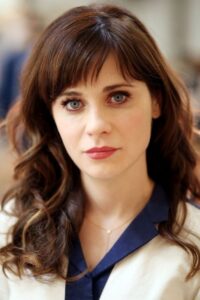 for the role of Noel in All the Real Girls – After graduating from an all-girls’ boarding school, Noel returns home to her small North Carolina mill town and falls in love. Unfortunately for her, the object of her affection is both her older brother’s best friend and the local lothario. Noel’s struggle with this new relationship is so realistic that it becomes uncomfortable to watch, yet compels you to do so. Deschanel perfectly captures the awkward vulnerability of a young woman in the throes of first love. As the couple’s connection disintegrated and their emotions were laid bare, her performance felt so authentic that I left the film feeling heartbroken. –hn for the role of Noel in All the Real Girls – After graduating from an all-girls’ boarding school, Noel returns home to her small North Carolina mill town and falls in love. Unfortunately for her, the object of her affection is both her older brother’s best friend and the local lothario. Noel’s struggle with this new relationship is so realistic that it becomes uncomfortable to watch, yet compels you to do so. Deschanel perfectly captures the awkward vulnerability of a young woman in the throes of first love. As the couple’s connection disintegrated and their emotions were laid bare, her performance felt so authentic that I left the film feeling heartbroken. –hn
Scarlett Johansson for the role of Charlotte in Lost in Translation – So what makes 19-year-old Scarlett Johansson’s performance in Lost in Translation so special? Isn’t she playing the same disaffected, razor-tongued, postmodern waif she inhabited in Ghost World and countless other films? Not quite… in fact, not at all. To gloss over Johansson’s work here is akin to writing off Bill Murray’s portrayal of Bob Harris as an extended version of his Nick-the-Lounge-Singer character from “Saturday Night Live.” In Lost in Translation, Johansson finds the perfect foil and kindred-spirit in Murray, an actor who is himself quite skilled in delivering economical, multi-layered performances. Like him, she seems to stockpile her emotions deep inside of her, waiting for the perfect expression, beat, or word to reveal herself. Her crack comic timing, her vulnerability and, most of all, her effortless ability to smoothly match Murray step-for-step on all of these scores heralds the arrival of a truly fine, adult actress. –rfg for the role of Charlotte in Lost in Translation – So what makes 19-year-old Scarlett Johansson’s performance in Lost in Translation so special? Isn’t she playing the same disaffected, razor-tongued, postmodern waif she inhabited in Ghost World and countless other films? Not quite… in fact, not at all. To gloss over Johansson’s work here is akin to writing off Bill Murray’s portrayal of Bob Harris as an extended version of his Nick-the-Lounge-Singer character from “Saturday Night Live.” In Lost in Translation, Johansson finds the perfect foil and kindred-spirit in Murray, an actor who is himself quite skilled in delivering economical, multi-layered performances. Like him, she seems to stockpile her emotions deep inside of her, waiting for the perfect expression, beat, or word to reveal herself. Her crack comic timing, her vulnerability and, most of all, her effortless ability to smoothly match Murray step-for-step on all of these scores heralds the arrival of a truly fine, adult actress. –rfg
Frances McDormand for the role of Jane in Laurel Canyon – Long-time Chlotrudis favorite Frances McDormand (winner for Fargo at our 3rd annual ceremony) wows us yet again by completely and naturally inhabiting the role of a rock and roll producer. At first, she seems a hedonistic caricature, and we take the character’s son’s word for it that she’s a little insane, but over the course of the film McDormand peels away layers that allow us to see the depth of the character’s strength, creativity, professionalism, sexuality, responsibility, control, and even maternalism. –bg for the role of Jane in Laurel Canyon – Long-time Chlotrudis favorite Frances McDormand (winner for Fargo at our 3rd annual ceremony) wows us yet again by completely and naturally inhabiting the role of a rock and roll producer. At first, she seems a hedonistic caricature, and we take the character’s son’s word for it that she’s a little insane, but over the course of the film McDormand peels away layers that allow us to see the depth of the character’s strength, creativity, professionalism, sexuality, responsibility, control, and even maternalism. –bg
Samantha Morton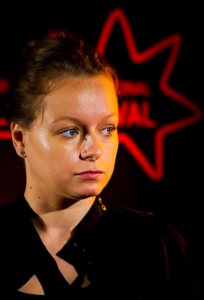 for the role of Morvern Callar in Morvern Callar – As Morvern Callar, Samantha Morton creates a portrait of a directionless and detached young woman. When her boyfriend commits suicide and leaves her a mix tape and a request that she try to get his novel published, she submits the book under her own name and uses the money from the sale to try to change – or one could say “create” – her life. The mix tape becomes a soundtrack to her life, but even with numerous close-ups of her face, it’s hard to tell if the music is representing her feelings, telling her how she’s supposed to feel, or if she isn’t actually feeling anything at all. Morton is constantly challenging the viewer to try to get inside her head and figure out what’s going on in there. –bg for the role of Morvern Callar in Morvern Callar – As Morvern Callar, Samantha Morton creates a portrait of a directionless and detached young woman. When her boyfriend commits suicide and leaves her a mix tape and a request that she try to get his novel published, she submits the book under her own name and uses the money from the sale to try to change – or one could say “create” – her life. The mix tape becomes a soundtrack to her life, but even with numerous close-ups of her face, it’s hard to tell if the music is representing her feelings, telling her how she’s supposed to feel, or if she isn’t actually feeling anything at all. Morton is constantly challenging the viewer to try to get inside her head and figure out what’s going on in there. –bg
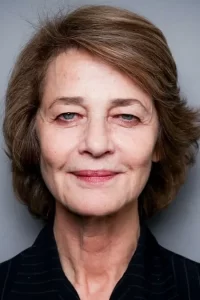 Charlotte Rampling for the role of Sarah Morton in Swimming Pool – Think how hard it must be to play a writer. How do you indicate that you have no ideas, or that you’ve just thought of something? Nicole Kidman, usually superb, reverted in The Hours to a furrowed brow, followed by an aha look and feverish scribbling. But Charlotte Rampling is magnificently subtle as Sarah Morton, a repressive, blocked mystery writer who regains her fluency while borrowing her publisher’s house in the South of France. Supported by both a daring screenplay and Ludivine Sagnier as her wild-girl opposite, she captures Morton’s stiffness, resentment, and self-doubt, and then the increasing ease and confidence of a writer at the height of her power. It’s Rampling’s second Chlotrudis nomination, following her nod for Under the Sand at the 8th Awards. Will she take the prize? Let’s not keep her waiting. –jy Charlotte Rampling for the role of Sarah Morton in Swimming Pool – Think how hard it must be to play a writer. How do you indicate that you have no ideas, or that you’ve just thought of something? Nicole Kidman, usually superb, reverted in The Hours to a furrowed brow, followed by an aha look and feverish scribbling. But Charlotte Rampling is magnificently subtle as Sarah Morton, a repressive, blocked mystery writer who regains her fluency while borrowing her publisher’s house in the South of France. Supported by both a daring screenplay and Ludivine Sagnier as her wild-girl opposite, she captures Morton’s stiffness, resentment, and self-doubt, and then the increasing ease and confidence of a writer at the height of her power. It’s Rampling’s second Chlotrudis nomination, following her nod for Under the Sand at the 8th Awards. Will she take the prize? Let’s not keep her waiting. –jy
|
|
Best Actor
|

Philip Seymour Hoffman for the role of Dan Mahowny in Owning Mahowny – This is Phil’s 3rd Chlotrudis nomination following a nod for Best Supporting Actor at the 5th, and a win for Best Supporting Actor at the 6th Awards ceremonies. In addition, Phil was awarded the Gertrudis Award at the 5th Annual Awards. In this film about a banker who has a serious gambling problem and uses the bank’s big accounts to supply his habit, Philip Seymour Hoffman’s performance is, as Roger Ebert describes it “a masterpiece of discipline and precision.” Going all out is nothing new to Hoffman, and in this role, his compulsion to gamble to the exclusion of all else is conveyed in every shot of his bent head or muttered bet. Hoffman’s character doesn’t care if we don’t like him, he is gambling and that is all he cares about. –eeg for the role of Dan Mahowny in Owning Mahowny – This is Phil’s 3rd Chlotrudis nomination following a nod for Best Supporting Actor at the 5th, and a win for Best Supporting Actor at the 6th Awards ceremonies. In addition, Phil was awarded the Gertrudis Award at the 5th Annual Awards. In this film about a banker who has a serious gambling problem and uses the bank’s big accounts to supply his habit, Philip Seymour Hoffman’s performance is, as Roger Ebert describes it “a masterpiece of discipline and precision.” Going all out is nothing new to Hoffman, and in this role, his compulsion to gamble to the exclusion of all else is conveyed in every shot of his bent head or muttered bet. Hoffman’s character doesn’t care if we don’t like him, he is gambling and that is all he cares about. –eeg |
Javier Bardem for the role of Det. Lt. Agustín Rejas in The Dancer Upstairs – Javier Bardem brings his usual elegant gravity to the role of Detective Lieutenant Agustín Rejas. Investigating a revolutionary terrorist group similar to Peru’s Shining Path, which has penetrated society to the extent that much of the machine-gunning and bombing is done by children, Rejas feels betrayed by his own deep belief in a more populist government. At the same time, he is drawn to his daughter’s dance teacher, despite never knowing who he can trust. The eloquence of Bardem’s performance is such that it is never upstaged by the unusual visual violence in this film. This is Bardem’s second nomination (following his nod for Before Night Falls at the 8th Awards). –jy for the role of Det. Lt. Agustín Rejas in The Dancer Upstairs – Javier Bardem brings his usual elegant gravity to the role of Detective Lieutenant Agustín Rejas. Investigating a revolutionary terrorist group similar to Peru’s Shining Path, which has penetrated society to the extent that much of the machine-gunning and bombing is done by children, Rejas feels betrayed by his own deep belief in a more populist government. At the same time, he is drawn to his daughter’s dance teacher, despite never knowing who he can trust. The eloquence of Bardem’s performance is such that it is never upstaged by the unusual visual violence in this film. This is Bardem’s second nomination (following his nod for Before Night Falls at the 8th Awards). –jy
Bruce Campbell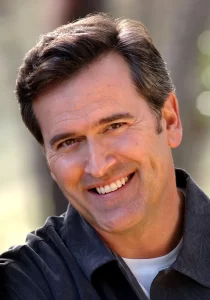 for the role of Elvis in Bubba Ho-Tep – Bruce Campbell is a legendary B-movie actor and producer. He is the unforgettable hero of Sam Raimi’s Evil Dead films and his ilarious, for the role of Elvis in Bubba Ho-Tep – Bruce Campbell is a legendary B-movie actor and producer. He is the unforgettable hero of Sam Raimi’s Evil Dead films and his ilarious,
slapstick acting style is a force to be reckoned with. Although his talent is unquestioned, few would expect that he would be able to pull off a touching, human portrait of a lonely resident in a Texas nursing home- especially given the fact that the character in question is actually a still-alive-after-all-these-years Elvis Presley who must defeat a resuscitated mummy in order to save the other elderly residents of his home – but he does in the scary, funny cult hit Bubba Ho-Tep. –nh
Peter Dinklage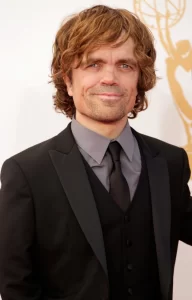 for the role of Finbar McBride in The Station Agent – Standing just four-and-a-half feet tall, playwright/actor Peter Dinklage makes a huge impression as the reclusive train enthusiast Fin in The Station Agent. Both the character and actor attract attention due to their small stature, but it is the wit, intelligence, and smoldering sensuality that Dinklage brings to the role that truly captivates. With his exceptionally grounded breakout performance, Dinklage is the glue holding the film together and establishes himself as a talent to watch. –sc for the role of Finbar McBride in The Station Agent – Standing just four-and-a-half feet tall, playwright/actor Peter Dinklage makes a huge impression as the reclusive train enthusiast Fin in The Station Agent. Both the character and actor attract attention due to their small stature, but it is the wit, intelligence, and smoldering sensuality that Dinklage brings to the role that truly captivates. With his exceptionally grounded breakout performance, Dinklage is the glue holding the film together and establishes himself as a talent to watch. –sc
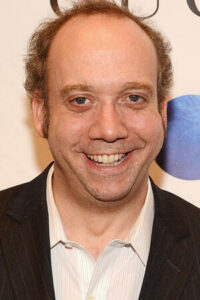 Paul Giamatti for the role of Harvey Pekar in American Splendor – Any time an actor portrays a real person there must be a certain amount of pressure inherent in the process. Now magnify that by portraying a living person, and having the person participating and appearing in the film with you. Paul Giamatti meets this challenge and excels in his role as Harvey Pekar. Giamatti embodies Pekar’s slouchy insecurities and odd, leering expressions without becoming a parody. Even as the story ventures into romance with the introduction of Joyce Brabner, it is touching without becoming trite. Ultimately they prove the old maxim that there is someone out there for everyone.–hn Paul Giamatti for the role of Harvey Pekar in American Splendor – Any time an actor portrays a real person there must be a certain amount of pressure inherent in the process. Now magnify that by portraying a living person, and having the person participating and appearing in the film with you. Paul Giamatti meets this challenge and excels in his role as Harvey Pekar. Giamatti embodies Pekar’s slouchy insecurities and odd, leering expressions without becoming a parody. Even as the story ventures into romance with the introduction of Joyce Brabner, it is touching without becoming trite. Ultimately they prove the old maxim that there is someone out there for everyone.–hn
Bill Murray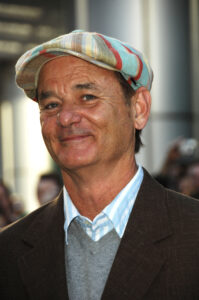 for the role of Bill Harris in Lost in Translation – Bill Murray is like a fine wine, he just gets better with age. Starting off as a smarty-pants comedic anti-hero, he as evolved into a wry and sardonic version of the beaten-down everyman whose clownish demeanor is only a mask for a deeper incurable sorrow. Director Sofia Coppola wrote the role of washed-up actor Bob Harris just for him, and Murray inhabits the role as if he were living it (which in a sense, he was, as much of the film is improvised). Ranging from moments of slapstick comedy and bemused wit, to surprisingly poignant candor, Murray also walks that fine line of May-December friendship without a misstep – retaining that longing for friendship and lost youth, while impressively avoiding unnecessarily creepy sexual suggestion or lapsing into middle-age caricature. The cherry on a sundae of a wonderfully diverse career, Lost in Translation proves that indeed, the best actors often come from comedy. –cm for the role of Bill Harris in Lost in Translation – Bill Murray is like a fine wine, he just gets better with age. Starting off as a smarty-pants comedic anti-hero, he as evolved into a wry and sardonic version of the beaten-down everyman whose clownish demeanor is only a mask for a deeper incurable sorrow. Director Sofia Coppola wrote the role of washed-up actor Bob Harris just for him, and Murray inhabits the role as if he were living it (which in a sense, he was, as much of the film is improvised). Ranging from moments of slapstick comedy and bemused wit, to surprisingly poignant candor, Murray also walks that fine line of May-December friendship without a misstep – retaining that longing for friendship and lost youth, while impressively avoiding unnecessarily creepy sexual suggestion or lapsing into middle-age caricature. The cherry on a sundae of a wonderfully diverse career, Lost in Translation proves that indeed, the best actors often come from comedy. –cm
Campbell Scott for the role of David Hurst in The Secret Lives of DentistsScott adds another great performance to his career as David, an emotionally closed dentist who refuses to confront his wife’s adultery. Not willing to deal with the hard decisions that would follow acknowledging her affair, David sublimates his distress, grief, and anger into an alter ego. Scott plays off costar Hope Davis perfectly, in this darkly funny script with its ambiguous ending. –djy for the role of David Hurst in The Secret Lives of DentistsScott adds another great performance to his career as David, an emotionally closed dentist who refuses to confront his wife’s adultery. Not willing to deal with the hard decisions that would follow acknowledging her affair, David sublimates his distress, grief, and anger into an alter ego. Scott plays off costar Hope Davis perfectly, in this darkly funny script with its ambiguous ending. –djy |
|
Best Supporting Actress
|

Patricia Clarkson for the role of Olivia Harris in The Station Agent – 2003 was the year of Patricia Clarkson. An unavoidable force in independent cinema since she first came to attention in 1998’s High Art, she was the toast of the town at last year’s Sundance Film Festival with three acclaimed new films. The Station Agent was her meatiest role, and Clarkson shines as the befuddled painter Olivia, who befriends the dwarfish loner Finbar McBride almost against his will. But as with all of her roles, there is more to this character than meets the eye, and she portrays the sorrow of loss and the joy of friendship with sublime honesty, avoiding overly showy performance even in moments of indescribable grief. With the help of a wonderful script and a superb circle of actors, Clarkson brings in her strongest role to date. –cm for the role of Olivia Harris in The Station Agent – 2003 was the year of Patricia Clarkson. An unavoidable force in independent cinema since she first came to attention in 1998’s High Art, she was the toast of the town at last year’s Sundance Film Festival with three acclaimed new films. The Station Agent was her meatiest role, and Clarkson shines as the befuddled painter Olivia, who befriends the dwarfish loner Finbar McBride almost against his will. But as with all of her roles, there is more to this character than meets the eye, and she portrays the sorrow of loss and the joy of friendship with sublime honesty, avoiding overly showy performance even in moments of indescribable grief. With the help of a wonderful script and a superb circle of actors, Clarkson brings in her strongest role to date. –cm |
Patricia Clarkson for the role of Joy Burns in Pieces of April – She is dying of breast cancer, sick mostly of being treated with fearful delicacy, breezily resigned to a difficult reunion with her black sheep daughter. Patricia Clarkson’s ironically named character, Joy, has a venomous sarcasm that leaves no one in her family untouched, but we in the audience can laugh from our safe remove. This terrific performance is Clarkson’s fourth Best Supporting Actress nomination from Chlotrudis. She received a nod at the 5th Awards ceremony for her role in High Art, last year for Far From Heaven, and this year for The Station Agent. –djy for the role of Joy Burns in Pieces of April – She is dying of breast cancer, sick mostly of being treated with fearful delicacy, breezily resigned to a difficult reunion with her black sheep daughter. Patricia Clarkson’s ironically named character, Joy, has a venomous sarcasm that leaves no one in her family untouched, but we in the audience can laugh from our safe remove. This terrific performance is Clarkson’s fourth Best Supporting Actress nomination from Chlotrudis. She received a nod at the 5th Awards ceremony for her role in High Art, last year for Far From Heaven, and this year for The Station Agent. –djy
Hope Davis  for the role of Jouce Brabner in American Splendor – Hope Davis began her career playing bit parts in blockbusters like Flatliners and Home Alone. Fortunately for us, she soon switched to juicier roles in indies such as The Daytrippers, The Myth of Fingerprints and Next Stop Wonderland. Last year saw her in two stellar roles in The Secret Lives of Dentists and in the excellent American Splendor. In that inspired film, Davis brings warmth, life and understanding to a most understated character: Joyce Brabner, the mousy, quirky, real-life partner of author Harvey Pekar. –nh for the role of Jouce Brabner in American Splendor – Hope Davis began her career playing bit parts in blockbusters like Flatliners and Home Alone. Fortunately for us, she soon switched to juicier roles in indies such as The Daytrippers, The Myth of Fingerprints and Next Stop Wonderland. Last year saw her in two stellar roles in The Secret Lives of Dentists and in the excellent American Splendor. In that inspired film, Davis brings warmth, life and understanding to a most understated character: Joyce Brabner, the mousy, quirky, real-life partner of author Harvey Pekar. –nh
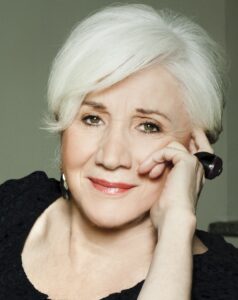 Olympia Dukakis for the role of Lila in The Event – Here we have a character whose no-nonsense warmth and humor seem to suffuse the screen, much like the other witty, feisty and good-hearted characters Dukakis has played over the years. In The Event, she is the mother of a man with AIDS, and we get to see her response to his coming out, to his announcing his illness, to his desire to die with dignity. When she decides to aid in her son’s elaborately-planned farewell party/assisted suicide, it is with the knowledge that the medical machinery will take over and all will go as planned. When it doesn’t, her decision to take matter into her own hands, quite literally, is one of the most gruelling and heartbreaking monents seen on film this year. Dukakis does not falter, and the harsh but human reality of this moment is indelible. –pa Olympia Dukakis for the role of Lila in The Event – Here we have a character whose no-nonsense warmth and humor seem to suffuse the screen, much like the other witty, feisty and good-hearted characters Dukakis has played over the years. In The Event, she is the mother of a man with AIDS, and we get to see her response to his coming out, to his announcing his illness, to his desire to die with dignity. When she decides to aid in her son’s elaborately-planned farewell party/assisted suicide, it is with the knowledge that the medical machinery will take over and all will go as planned. When it doesn’t, her decision to take matter into her own hands, quite literally, is one of the most gruelling and heartbreaking monents seen on film this year. Dukakis does not falter, and the harsh but human reality of this moment is indelible. –pa
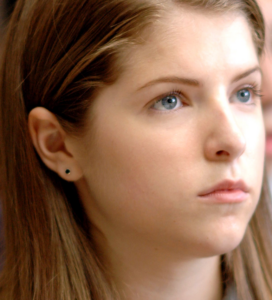 Anna Kendrick for the role of Fritzi in Camp – From her first moments onscreen, Fritzi shows that she wants nothing more than to support Jill, Camp Ovation’s diva-in-training, in becoming a star. This begs the question, is this devotion genuine or does the spirit of Eve Harrington lurk beneath her mousy exterior? Fritzi’s transformation from bug juice-serving minion to Sondheim-belting star in a rendition of ”The Ladies Who Lunch” is one of the standout moments of the film. After witnessing her emerge from backstage in make-up and costume, ready to take over for the suddenly- stricken Jill, we agree with the assessment of the camp’s musical director: “I’ve been watching you, and you’re a scary little girl.” –hn Anna Kendrick for the role of Fritzi in Camp – From her first moments onscreen, Fritzi shows that she wants nothing more than to support Jill, Camp Ovation’s diva-in-training, in becoming a star. This begs the question, is this devotion genuine or does the spirit of Eve Harrington lurk beneath her mousy exterior? Fritzi’s transformation from bug juice-serving minion to Sondheim-belting star in a rendition of ”The Ladies Who Lunch” is one of the standout moments of the film. After witnessing her emerge from backstage in make-up and costume, ready to take over for the suddenly- stricken Jill, we agree with the assessment of the camp’s musical director: “I’ve been watching you, and you’re a scary little girl.” –hn
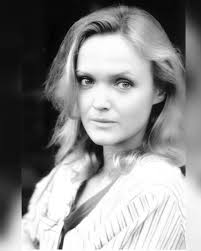 Miranda Richardson for the role of Yvonne/Mrs. Cleg/Mrs. Wilkinson in Spider – Miranda Richardson in a dual role: First, as the gentle mother of the young Spider, and then as the crude and crass prostitute who displaces his mother and invades Spider’s world (along with a reappearance at the assisted living/boarding house where Spider has been placed as an adult outpatient of a mental hospital). In a story broken into flashbacks and littered with hallucinations, she delivers a catlike contradiction of docile domesticity and ruthless self-preservation: Is Richardson the harlot in the bar, or is she the shabbily genteel mother? The scene in the dark alleyway, where she pouts in a practiced caricature of pleasure while “doing business” with Gabriel Byrne, paints her as whore and deceiver with barely a word of dialogue necessary. Ralph Fiennes is the putative “star” in this film of deception and misperception, but it is Richardson whose performance replays in our minds. —kp Miranda Richardson for the role of Yvonne/Mrs. Cleg/Mrs. Wilkinson in Spider – Miranda Richardson in a dual role: First, as the gentle mother of the young Spider, and then as the crude and crass prostitute who displaces his mother and invades Spider’s world (along with a reappearance at the assisted living/boarding house where Spider has been placed as an adult outpatient of a mental hospital). In a story broken into flashbacks and littered with hallucinations, she delivers a catlike contradiction of docile domesticity and ruthless self-preservation: Is Richardson the harlot in the bar, or is she the shabbily genteel mother? The scene in the dark alleyway, where she pouts in a practiced caricature of pleasure while “doing business” with Gabriel Byrne, paints her as whore and deceiver with barely a word of dialogue necessary. Ralph Fiennes is the putative “star” in this film of deception and misperception, but it is Richardson whose performance replays in our minds. —kp
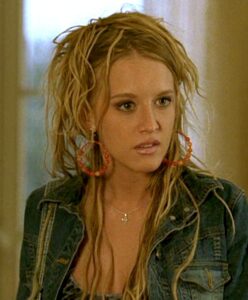 Ludivine Sagnier for the role of Julie in Swimming Pool – You might think that sharing the screen with indie-vet, and fellow Chlotrudis nominee, Charlotte Rampling would give a young actress such as Sagnier reason to disappear onscreen. Instead, she takes a deliberately nebulous Lolita-ish role and invests such a mixture of hurt, rage, and sexual tension in it that at times we feel more for her character than for Ms. Rampling’s. She switches emotions seamlessly, making it difficult (if not impossible), to see what’s behind the party-girl mask. In the end, her pliable performance is key to the film’s plausibility. –rfg Ludivine Sagnier for the role of Julie in Swimming Pool – You might think that sharing the screen with indie-vet, and fellow Chlotrudis nominee, Charlotte Rampling would give a young actress such as Sagnier reason to disappear onscreen. Instead, she takes a deliberately nebulous Lolita-ish role and invests such a mixture of hurt, rage, and sexual tension in it that at times we feel more for her character than for Ms. Rampling’s. She switches emotions seamlessly, making it difficult (if not impossible), to see what’s behind the party-girl mask. In the end, her pliable performance is key to the film’s plausibility. –rfg
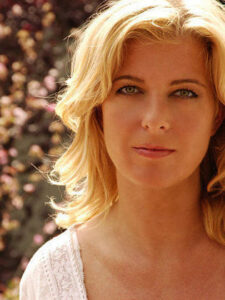 Paprika Steen for the role of Marie in Open Hearts – In this simple but powerful story of infidelity, Steen shines as an understanding wife whose husband is drawn into a passionate affair with the wife of a young man who is paralyzed when he is hit by Steen’s car. At first, driven by a guilt she can’t quite bring herself to acknowledge, she urges her husband, a surgeon, to comfort the young woman at the hospital. Her caring smile stretches thin as he starts keepng later hours there, responding to the young woman’s phone calls with increasing interest. When she learns of his betrayal, her explosion of anger, hurt and bitterness is stunning. Even better: the scene where she confronts the young woman in an apartment full of furnishings bought by her husband, icily informing her “We can’t afford this furniture.” Steen has been a strong presence in Danish cinema for years and this role marks a move beyond her usual romantic ingenues.–pa Paprika Steen for the role of Marie in Open Hearts – In this simple but powerful story of infidelity, Steen shines as an understanding wife whose husband is drawn into a passionate affair with the wife of a young man who is paralyzed when he is hit by Steen’s car. At first, driven by a guilt she can’t quite bring herself to acknowledge, she urges her husband, a surgeon, to comfort the young woman at the hospital. Her caring smile stretches thin as he starts keepng later hours there, responding to the young woman’s phone calls with increasing interest. When she learns of his betrayal, her explosion of anger, hurt and bitterness is stunning. Even better: the scene where she confronts the young woman in an apartment full of furnishings bought by her husband, icily informing her “We can’t afford this furniture.” Steen has been a strong presence in Danish cinema for years and this role marks a move beyond her usual romantic ingenues.–pa
|
|
Best Supporting Actor
|
|
IT’S A TIE!!

Bobby Cannavale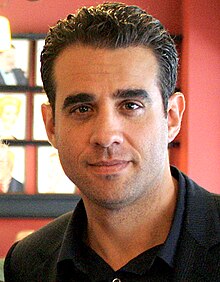 for the role of Joe Oramas in The Station Agent – As Joe Oramus, a gregarious hot-dog stand owner, Bobby Canavale bubbles with the pent-up energy and affection of a sloppy-tongued Saint Bernard. As a man to whom other people are not just important, but essential, to his own psychic well-being, Canavale sets up Joe as a polar opposite to Peter Dinklage’s introverted and scarred Finbar McBride character. What is amazing about this is that he does so without turning Joe into a caricature…no small feat, since he also has to play off the quiet-storm intensity of Patricia Clarkson. Canavale successfully walks a fine line by staying true to Joe’s extroverted nature, but not overwhelming the other characters or detracting attention from the other performers. In all, a wonderfully controlled performance. –rfg for the role of Joe Oramas in The Station Agent – As Joe Oramus, a gregarious hot-dog stand owner, Bobby Canavale bubbles with the pent-up energy and affection of a sloppy-tongued Saint Bernard. As a man to whom other people are not just important, but essential, to his own psychic well-being, Canavale sets up Joe as a polar opposite to Peter Dinklage’s introverted and scarred Finbar McBride character. What is amazing about this is that he does so without turning Joe into a caricature…no small feat, since he also has to play off the quiet-storm intensity of Patricia Clarkson. Canavale successfully walks a fine line by staying true to Joe’s extroverted nature, but not overwhelming the other characters or detracting attention from the other performers. In all, a wonderfully controlled performance. –rfg

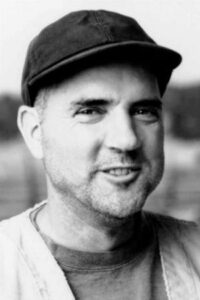 Jack Kehler for the role of Denny in Love Liza – Jack Kehler’s Denny provides a bent sort of comic relief opposite Philip Seymour Hoffman’s morose Wilson Joel in brother Gordy Hoffman’s rumination on the aftermath of a spouse’s suicide. It’s Kehler’s manic enthusiasm for radio controlled vehicles that restores a bit of spark to Wilson’s life, but simultaneously provides the means to send him further down a creepy path of self-destruction. Not that Denny is himself completely stable; his loss in an RC boat race sends him into a supreme funk that nearly squashes the characters’ nascent friendship. The impression that lingers as the credits roll is of a man who, as long as there’s a beer to drink and a buzzing little boat to drive around, will be okay despite an occasional setback. That the impression does linger makes Kehler’s performance worthy of this nomination. –jp Jack Kehler for the role of Denny in Love Liza – Jack Kehler’s Denny provides a bent sort of comic relief opposite Philip Seymour Hoffman’s morose Wilson Joel in brother Gordy Hoffman’s rumination on the aftermath of a spouse’s suicide. It’s Kehler’s manic enthusiasm for radio controlled vehicles that restores a bit of spark to Wilson’s life, but simultaneously provides the means to send him further down a creepy path of self-destruction. Not that Denny is himself completely stable; his loss in an RC boat race sends him into a supreme funk that nearly squashes the characters’ nascent friendship. The impression that lingers as the credits roll is of a man who, as long as there’s a beer to drink and a buzzing little boat to drive around, will be okay despite an occasional setback. That the impression does linger makes Kehler’s performance worthy of this nomination. –jp
|
Artyom Bogucharsky for the role of Volodya in Lilja 4-Ever – As Lilja’s only friend, and himself a victim of circumstance, Bogucharsky’s Volodya is full of tough talk, and yet utterly vulnerable at the same time. He is like a little brother to her, and as such relies on her for food, shelter, and emotional support. In turn he does what he can to help her, offering advice and a place to hide. We see his bravado is really bravery; a defense against a violent and loveless life. What he manages to do that the other neighborhood boys and the adults in their world do not, is remain good at heart. He would rather give up everything than to become like them. An evocative and resonant performance. –eeg for the role of Volodya in Lilja 4-Ever – As Lilja’s only friend, and himself a victim of circumstance, Bogucharsky’s Volodya is full of tough talk, and yet utterly vulnerable at the same time. He is like a little brother to her, and as such relies on her for food, shelter, and emotional support. In turn he does what he can to help her, offering advice and a place to hide. We see his bravado is really bravery; a defense against a violent and loveless life. What he manages to do that the other neighborhood boys and the adults in their world do not, is remain good at heart. He would rather give up everything than to become like them. An evocative and resonant performance. –eeg
 Ossie Davis for the role of Jack Kennedy in Bubba Ho-Tep – Most would argue that the job of a supporting actor is to lift their lead above the film — to make the film better. Ossie Davis does this most sublimely, lifting Bruce Campbell’s performance to make you believe in Campbell’s Elvis. Davis plays a man who may or may not be JFK. Whether he is or not is not important because Davis character completes the “Odd Couple” dynamic of the film. Davis is Felix to Campbell’s Oscar. Without Davis’ play-it-straight performance Bubba Ho-Tep would not have been the wonderful farce it is. In fact, without Ossie Davis, Campbell’s believability would be diminished and the film’s touching finale would have been just another manipulative sap-fest. –hs Ossie Davis for the role of Jack Kennedy in Bubba Ho-Tep – Most would argue that the job of a supporting actor is to lift their lead above the film — to make the film better. Ossie Davis does this most sublimely, lifting Bruce Campbell’s performance to make you believe in Campbell’s Elvis. Davis plays a man who may or may not be JFK. Whether he is or not is not important because Davis character completes the “Odd Couple” dynamic of the film. Davis is Felix to Campbell’s Oscar. Without Davis’ play-it-straight performance Bubba Ho-Tep would not have been the wonderful farce it is. In fact, without Ossie Davis, Campbell’s believability would be diminished and the film’s touching finale would have been just another manipulative sap-fest. –hs
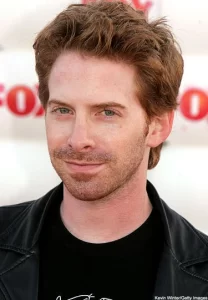 Seth Green for the role of James St. James in Party Monster – Seth Green reaches beyond the limits of his typical roles to play James St. James, friend and social mentor of club kid Michael Alig. Green portrays the most flamboyant character in the film yet offers the most restrained performance. This is a feat, considering his exaggerated, fey mannerisms and outrageous wardrobe; the Troll doll costume alone defies description. St. James is absolutely larger than life, but Green is surprisingly natural, channeling his comedic instincts into an ebullient portrait of a man obsessed with becoming a legend in his own time. –hn Seth Green for the role of James St. James in Party Monster – Seth Green reaches beyond the limits of his typical roles to play James St. James, friend and social mentor of club kid Michael Alig. Green portrays the most flamboyant character in the film yet offers the most restrained performance. This is a feat, considering his exaggerated, fey mannerisms and outrageous wardrobe; the Troll doll costume alone defies description. St. James is absolutely larger than life, but Green is surprisingly natural, channeling his comedic instincts into an ebullient portrait of a man obsessed with becoming a legend in his own time. –hn
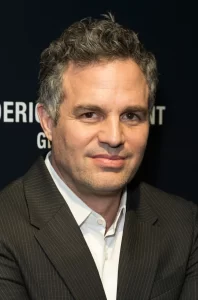 Mark Ruffalo for the role of Lee in My Life Without Me – Ruffalo, best known for You Can Count on Me, here gets a spot on the to-do list of a dying woman. “Make someone fall in love with me” is one of Ann’s final tasks. As Lee, hesitant, scruffy, and charming, Ruffalo has a short, intense relationship with a woman who will not be his. Falling in love in a laudromat, making love in a barren living room, and seeing the end of it all through the windshield, Ruffalo breaks our hearts. –djy Mark Ruffalo for the role of Lee in My Life Without Me – Ruffalo, best known for You Can Count on Me, here gets a spot on the to-do list of a dying woman. “Make someone fall in love with me” is one of Ann’s final tasks. As Lee, hesitant, scruffy, and charming, Ruffalo has a short, intense relationship with a woman who will not be his. Falling in love in a laudromat, making love in a barren living room, and seeing the end of it all through the windshield, Ruffalo breaks our hearts. –djy
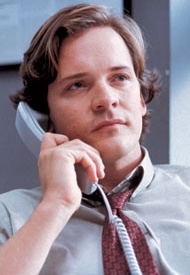 Peter Sarsgaard for the role of Charles “Chuck” Lane in Shattered Glass – As conscientious New Republiceditor-in-chief Chuck Lane, Peter Sarsgaard takes the ordinarily dry role of the straight man to new heights, matching the bravura of co-stars Haydn Christensen, Chloe Sevigny, and Steve Zahn, all of whom have more colorful characters to play. Ironically, Sarsgaard achieves this by projecting inward rather than outward, internalizing his emotions effectively during some of the film’s tautest moments. His features speak volumes of outrage and betrayal during a conference call that exposes Glass’ lies to him for the first time. It’s a tricky scene because it demands that Sargaard convince the actor on the call *and* us of different things at the same time. His performance drives the film to a powerful conclusion by conveying the seriousness of Glass’ offences with the appropriate mix of outrage and disbelief. –rfg Peter Sarsgaard for the role of Charles “Chuck” Lane in Shattered Glass – As conscientious New Republiceditor-in-chief Chuck Lane, Peter Sarsgaard takes the ordinarily dry role of the straight man to new heights, matching the bravura of co-stars Haydn Christensen, Chloe Sevigny, and Steve Zahn, all of whom have more colorful characters to play. Ironically, Sarsgaard achieves this by projecting inward rather than outward, internalizing his emotions effectively during some of the film’s tautest moments. His features speak volumes of outrage and betrayal during a conference call that exposes Glass’ lies to him for the first time. It’s a tricky scene because it demands that Sargaard convince the actor on the call *and* us of different things at the same time. His performance drives the film to a powerful conclusion by conveying the seriousness of Glass’ offences with the appropriate mix of outrage and disbelief. –rfg
|
|
Best Original Screenplay
|

 Lost in Translation, screenplay by Sofia Coppola – With Lost In Translation, Sofia Coppola neatly captures the slightly Twilight Zone‘ish feeling of being out of touch with everything and everyone around you. Yet she does so with such unassuming ease and good humor that you may not even be aware that such serious themes exist beneath the candy-colored surface of the film. As you marvel at Bill Murray’s and Scarlett Johannson’s seemingly effortless interplay, don’t forget that their latitude is in part enabled by Coppola’s script. It’s strategic absence of conventional plotpoints leaves them miles of glorious space for emotional exploration and character development. If that weren’t enough, Coppola’s script is loaded with a non-stop parade of stranger-in-a-strange-land iconic imagery that you won’t shake for days… such as the by now infamous Murray-on-the-hotel-bed shot. –rfg Lost in Translation, screenplay by Sofia Coppola – With Lost In Translation, Sofia Coppola neatly captures the slightly Twilight Zone‘ish feeling of being out of touch with everything and everyone around you. Yet she does so with such unassuming ease and good humor that you may not even be aware that such serious themes exist beneath the candy-colored surface of the film. As you marvel at Bill Murray’s and Scarlett Johannson’s seemingly effortless interplay, don’t forget that their latitude is in part enabled by Coppola’s script. It’s strategic absence of conventional plotpoints leaves them miles of glorious space for emotional exploration and character development. If that weren’t enough, Coppola’s script is loaded with a non-stop parade of stranger-in-a-strange-land iconic imagery that you won’t shake for days… such as the by now infamous Murray-on-the-hotel-bed shot. –rfg |
28 Days Later… , screenplay by Alex Garland – Since the zombie plot has been done to death (pun intended), how do you make it fresh, interesting and, in this modern world of desensitization, scary? Use elements that frighten people today, of course. Write a story about a rapid and highly contagious virus that turns people into the angry walking dead and make your zombies superhuman. Throw in some character development and you get a script that scares because there are some elements of truth in the disease and you care about the surviving humans having gotten to know them. Because of this, 28 Days Later… became the best scare of 2003 thus proving that any genre of film can be great as long as the audience feels for the characters.–hs , screenplay by Alex Garland – Since the zombie plot has been done to death (pun intended), how do you make it fresh, interesting and, in this modern world of desensitization, scary? Use elements that frighten people today, of course. Write a story about a rapid and highly contagious virus that turns people into the angry walking dead and make your zombies superhuman. Throw in some character development and you get a script that scares because there are some elements of truth in the disease and you care about the surviving humans having gotten to know them. Because of this, 28 Days Later… became the best scare of 2003 thus proving that any genre of film can be great as long as the audience feels for the characters.–hs
 All the Real Girls, screenplay by David Gordon Green and Paul Schneider – The highs and lows of love are perfectly written by Green and Schneider into the script of All the Real Girls. The roller coaster of these emotions is carried by simple, natural dialogue, intimate moments between the lovers, and a flawless arc that carries the audience through this relationship’s rollercoaster ride. Green and Schneider began writing the film in college and continued as their film careers began after graduation, working on different coasts. Their collaboration brings us a delicate yet intense story of young love. –im All the Real Girls, screenplay by David Gordon Green and Paul Schneider – The highs and lows of love are perfectly written by Green and Schneider into the script of All the Real Girls. The roller coaster of these emotions is carried by simple, natural dialogue, intimate moments between the lovers, and a flawless arc that carries the audience through this relationship’s rollercoaster ride. Green and Schneider began writing the film in college and continued as their film careers began after graduation, working on different coasts. Their collaboration brings us a delicate yet intense story of young love. –im
 Love Liza, screenplay by Gordy Hoffman – Surely Hoffman had his brother Philip Seymour Hoffman in mind when penning this script. The screenplay picks at a wound that refuses to heal – all that remains of Wilson Joel, a man abraded with guilt and bandaged in denial over the suicide of his wife, Liza. The dialogue is deliberately indirect and cautious, the characters stifled and conflicted by the cultural taboos that surround suicide – these are glimpses into a mirror of anguish as seen from an oblique angle, a reflection of sorrow and disquiet that would shatter both mourner and observer if faced full-on. The script speaks volumes on the incapacity to articulate or alleviate grief; surely one of the quietest films this year, but with a heart-breaking realism in its awkward exchanges and delicate silences. –kp Love Liza, screenplay by Gordy Hoffman – Surely Hoffman had his brother Philip Seymour Hoffman in mind when penning this script. The screenplay picks at a wound that refuses to heal – all that remains of Wilson Joel, a man abraded with guilt and bandaged in denial over the suicide of his wife, Liza. The dialogue is deliberately indirect and cautious, the characters stifled and conflicted by the cultural taboos that surround suicide – these are glimpses into a mirror of anguish as seen from an oblique angle, a reflection of sorrow and disquiet that would shatter both mourner and observer if faced full-on. The script speaks volumes on the incapacity to articulate or alleviate grief; surely one of the quietest films this year, but with a heart-breaking realism in its awkward exchanges and delicate silences. –kp
 The Man Without a Past, screenplay by Aki Kaurismäki – This tale from Finnish director Kaurismäki sounds relentlessly grim on paper: a traveling businessman gets beaten up so severely he develops amnesia, and starts a new life living among Helsinki’s homeless community. However, the film is an uplifting little parable about identity and human kindness. Along with lovely performances from Markku Peltola and Kaurismäki favorite Kati Outinen, it’s suffused with a deadpan irony worthy of Jim Jarmusch, quirky charm, and lots of rockabilly music. –ck The Man Without a Past, screenplay by Aki Kaurismäki – This tale from Finnish director Kaurismäki sounds relentlessly grim on paper: a traveling businessman gets beaten up so severely he develops amnesia, and starts a new life living among Helsinki’s homeless community. However, the film is an uplifting little parable about identity and human kindness. Along with lovely performances from Markku Peltola and Kaurismäki favorite Kati Outinen, it’s suffused with a deadpan irony worthy of Jim Jarmusch, quirky charm, and lots of rockabilly music. –ck
 The Station Agent, screenplay by Thomas McCarthy – When his best friend suddenly dies, Finbar McBride, a man born with The Station Agent, screenplay by Thomas McCarthy – When his best friend suddenly dies, Finbar McBride, a man born with
dwarfism inherits a train depot in rural New Jersey. Seeking solitude, he is foiled by a loquacious coffee vendor parked in his lot, and a reckless driver who sends him diving off the road into the weeds for safety twice! Not surprisingly, the relationships between the three develop slowly. We see that McBride can go nowhere without constant stares and rude comments, and he regards even friendly overtures with a weary eye. McBride has built up such a strong wall against the world, that we too, must be patient while it is chipped away. It is worth the wait; McCarthy’s screenplay urges us to seek him, to know him, and finally to love him–for who he is, not as a novelty, something cute to be played with, or to mock. He is a man, and we want him to get with that cute librarian! –eeg
|
|
Best Adapted Screenplay
|

American Splendor , screenplay by Shari Springer Berman & Robert Pulcini, based on the comic books series by Harvey Pekar and Joyce Brabner – Harvey Pekar’s “American Splendor” series and Joyce Brabner’s Our Cancer Year, all autobiographical underground comic books, are not the stuff ofglamour or high drama. Directors and writers Berman and Pulcini have mined them for the stuff of ordinariness–a job as a file clerk, marital spats, illness–and transported their claim on us to a new medium. Splendor’s innovative storytelling strategy features Pekar in many incarnations, andadds depth and complexity to the Harvey we know from the page.–djy , screenplay by Shari Springer Berman & Robert Pulcini, based on the comic books series by Harvey Pekar and Joyce Brabner – Harvey Pekar’s “American Splendor” series and Joyce Brabner’s Our Cancer Year, all autobiographical underground comic books, are not the stuff ofglamour or high drama. Directors and writers Berman and Pulcini have mined them for the stuff of ordinariness–a job as a file clerk, marital spats, illness–and transported their claim on us to a new medium. Splendor’s innovative storytelling strategy features Pekar in many incarnations, andadds depth and complexity to the Harvey we know from the page.–djy |
Bubba Ho-Tep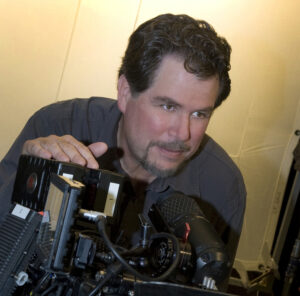 , screenplay by Don Coscarelli, based on the short story by Joe R. Lansdale – Writer, director and producer Don Coscarelli is a master of low budget horror and fantasy. His first two features (197’¹s Phantasm and 1982s The Beastmaster) are legendary B-movies. Joe R. Landsdale is a renowned horror writer whose usual milieu is the American West. When the two came together the result was last year’s cult hit Bubba Ho-Tep. Coscarelli’s note-perfect adaptation of Landsdale’s typically comic and creepy story brings to strange, hilarious life an aging (but still alive) Elvis and a black JFK up against an ancient, evil soul sucker! –nh , screenplay by Don Coscarelli, based on the short story by Joe R. Lansdale – Writer, director and producer Don Coscarelli is a master of low budget horror and fantasy. His first two features (197’¹s Phantasm and 1982s The Beastmaster) are legendary B-movies. Joe R. Landsdale is a renowned horror writer whose usual milieu is the American West. When the two came together the result was last year’s cult hit Bubba Ho-Tep. Coscarelli’s note-perfect adaptation of Landsdale’s typically comic and creepy story brings to strange, hilarious life an aging (but still alive) Elvis and a black JFK up against an ancient, evil soul sucker! –nh
 Marion Bridge, screenplay by Daniel McIvor, based on his play – Canadian playwright Daniel McIvor adapts his stage play about three sisters coming to terms with their past for the big screen with grace, and generous expanse. The thorny yet loving dialogue between the three siblings flows with good humor and a natural rhythm that makes one wonder if McIvor had three sisters that he grew up with. With the remote and beautiful backdrop of Cape Breton Isle, McIvor deftly opens his screenplay up beyond the stage. Despite the dramatic themes of incest and alcoholism, McIvor gracefully sidesteps melodrama and the result is a poignant tale filled with emotion and humor. –mrc Marion Bridge, screenplay by Daniel McIvor, based on his play – Canadian playwright Daniel McIvor adapts his stage play about three sisters coming to terms with their past for the big screen with grace, and generous expanse. The thorny yet loving dialogue between the three siblings flows with good humor and a natural rhythm that makes one wonder if McIvor had three sisters that he grew up with. With the remote and beautiful backdrop of Cape Breton Isle, McIvor deftly opens his screenplay up beyond the stage. Despite the dramatic themes of incest and alcoholism, McIvor gracefully sidesteps melodrama and the result is a poignant tale filled with emotion and humor. –mrc
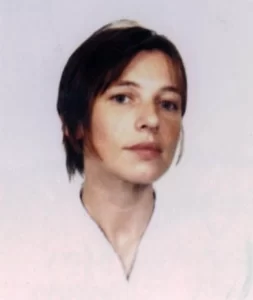  Morvern Callar, screenplay by Liana Dognini and Lynne Ramsay, based on the novel by Alan Warner – Morvern Callar is a special adaptation. Much of the story is internal, based on Morvern’s internal path through the grief of her boyfriend’s suicide on Christmas Day. The script focuses on actions rather than dialogue creating a tone poem on film. Dognini and Ramsay succeed in adapting a novel that was considered unadaptable. –im Morvern Callar, screenplay by Liana Dognini and Lynne Ramsay, based on the novel by Alan Warner – Morvern Callar is a special adaptation. Much of the story is internal, based on Morvern’s internal path through the grief of her boyfriend’s suicide on Christmas Day. The script focuses on actions rather than dialogue creating a tone poem on film. Dognini and Ramsay succeed in adapting a novel that was considered unadaptable. –im
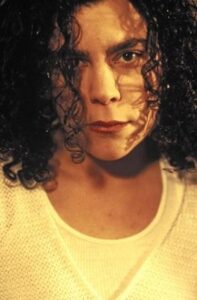 Safety of Objects, The, screenplay by Rose Troche, based on the short story collection by A. M. Homes – Adapting a short story into a screenplay is fairly commonplace in film, but adapting a collection of short stories and unifying them into a single, convincing narrative is rarely done, and even more rarely done well. Troche has done it with A.M. Homes’ fascinatingly quirky look at suburban lives, The Safety of Objects. The blending of multiple storylines is so seamless that even fans of Home’s collection will forget which characters were featured in which story. Characters speak and behave with realism when called for, and drama when necessary. It’s a brilliant achievement from a writer/director whose craft keeps improving. –mrc Safety of Objects, The, screenplay by Rose Troche, based on the short story collection by A. M. Homes – Adapting a short story into a screenplay is fairly commonplace in film, but adapting a collection of short stories and unifying them into a single, convincing narrative is rarely done, and even more rarely done well. Troche has done it with A.M. Homes’ fascinatingly quirky look at suburban lives, The Safety of Objects. The blending of multiple storylines is so seamless that even fans of Home’s collection will forget which characters were featured in which story. Characters speak and behave with realism when called for, and drama when necessary. It’s a brilliant achievement from a writer/director whose craft keeps improving. –mrc
Secret Lives of Dentists, The , screenplay by Craig Lucas, based on the novella, “The Age of Grief” by Jane Smiley – Campbell Scott and Hope Davisare husband and wife dentists who have their own successful practice and three young daughters. When Scott secretly witnesses Davis in an act of infidelity, his anguish mounts, simmers and eventually explodes while day-to-day life, with all of its family dinners and influenza epidemics, stays intact. Lucas’ wry, intelligent, and eventually sobering adaptation of Smiley’s novella also features Denis Leary as a testy patient who has an otherworldly effect on Scott’s id. –ck , screenplay by Craig Lucas, based on the novella, “The Age of Grief” by Jane Smiley – Campbell Scott and Hope Davisare husband and wife dentists who have their own successful practice and three young daughters. When Scott secretly witnesses Davis in an act of infidelity, his anguish mounts, simmers and eventually explodes while day-to-day life, with all of its family dinners and influenza epidemics, stays intact. Lucas’ wry, intelligent, and eventually sobering adaptation of Smiley’s novella also features Denis Leary as a testy patient who has an otherworldly effect on Scott’s id. –ck
Shattered Glass , screenplay by Billy Ray, based on the article by Buzz Bissinger – How to turn an article about a plagiaristic journalist into a , screenplay by Billy Ray, based on the article by Buzz Bissinger – How to turn an article about a plagiaristic journalist into a
compelling narrative film? Ray’s screenplay dives into the psyches of the key players, and the fine actors enliven these complex roles. Glass and his
disingenuousness are at the heart of this suspenseful story. Not suspenseful because we think there is some chance the accusations against him are wrong; but because we can’t wait to find out what we have missed about him. Is he not likeable to a fault, mercurially creative, a tireless researcher, and an unstoppable fountain of ideas? Editor and mentor Michael Kelly projects steady integrity and good-humored warmth. But new editor Chuck Lane seems too subdued, too closed-off, to have the passion necessary to uncover the depths of Glass’s deception. The scene where the surprising extent of Glass’ dishonesty is revealed is both restrained and powerful: one of the finer moments of 2003’s cinema. —pa
Whale Rider , screenplay by Niki Caro, based on the novel by Witi Ihimaera – Whale Rider is a mystical and beautiful story of a young girl’s attempts at breaking generations of tradition and stagnation of a small Maori tribe in New Zealand. The screenplay is a near perfect mixture of dramatic elements and it develops characters with care and reality. Take, for example, the grandfather. Yes, you despise him for what he does, but you understand completely the beliefs he has that lead him to his logical actions. The script also rides the fine line of what is mysticism and what is coincidence, leaving the audience to decide which they believe. Basically, it’s a screenplay good enough to make you want to read the book it’s based on to see if the source material is even better. –hs , screenplay by Niki Caro, based on the novel by Witi Ihimaera – Whale Rider is a mystical and beautiful story of a young girl’s attempts at breaking generations of tradition and stagnation of a small Maori tribe in New Zealand. The screenplay is a near perfect mixture of dramatic elements and it develops characters with care and reality. Take, for example, the grandfather. Yes, you despise him for what he does, but you understand completely the beliefs he has that lead him to his logical actions. The script also rides the fine line of what is mysticism and what is coincidence, leaving the audience to decide which they believe. Basically, it’s a screenplay good enough to make you want to read the book it’s based on to see if the source material is even better. –hs
|
|
Best Cinematography
|

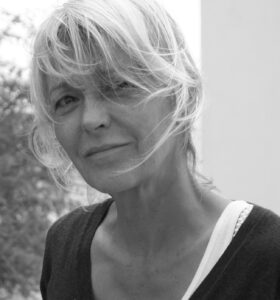 Agnès Godard for Friday Night – In a film with no words, cinematography is everything. The photography is as important to this film as animation is to Triplets of Belleville. Friday Night tells the story of a Parisian woman, about to move in with her longtime boyfriend, who picks up a strange man in a traffic jam and has a tender, intense, but almost wordless one-night affair with him. The camera captures every element—the traffic-blocked streets, an exhalation of smoke, the textures of skin and clothing, the other diners in a restaurant, and even the characters’ thoughts—so intimately that you may want to have un cigaretteafterwards. And return the gazes of strangers. This is Ms. Godard’s second nomination—her first, for Beau Travail at the 7th Awards, culminated in a win.–jy Agnès Godard for Friday Night – In a film with no words, cinematography is everything. The photography is as important to this film as animation is to Triplets of Belleville. Friday Night tells the story of a Parisian woman, about to move in with her longtime boyfriend, who picks up a strange man in a traffic jam and has a tender, intense, but almost wordless one-night affair with him. The camera captures every element—the traffic-blocked streets, an exhalation of smoke, the textures of skin and clothing, the other diners in a restaurant, and even the characters’ thoughts—so intimately that you may want to have un cigaretteafterwards. And return the gazes of strangers. This is Ms. Godard’s second nomination—her first, for Beau Travail at the 7th Awards, culminated in a win.–jy |
Rodrigo Prieto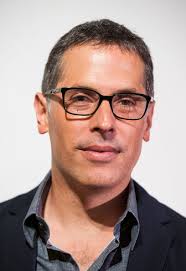 for 21 Grams – Prieto uses light and tonal variety to great effect in creating a richly textured atmosphere. Different qualities and types of light indicate the seasons, location, and emotional ambience of the three interwoven plots. The weak winter sun streams in through a window, the dirty yellow light of a small kitchen illuminates women’s faces, sisters swim through the cool blues of a swimming pool, spots of red break up the dark in a crowded nightclub, a couple drives through the grimy golden haze of remote dirt roads. Additionally, the film is full of remarkable smaller visual moments such as a flock of birds taking flight against the deep blue evening sky, their dark shapes contrasting with a motel’s neon sign glowing against the horizon. –hn for 21 Grams – Prieto uses light and tonal variety to great effect in creating a richly textured atmosphere. Different qualities and types of light indicate the seasons, location, and emotional ambience of the three interwoven plots. The weak winter sun streams in through a window, the dirty yellow light of a small kitchen illuminates women’s faces, sisters swim through the cool blues of a swimming pool, spots of red break up the dark in a crowded nightclub, a couple drives through the grimy golden haze of remote dirt roads. Additionally, the film is full of remarkable smaller visual moments such as a flock of birds taking flight against the deep blue evening sky, their dark shapes contrasting with a motel’s neon sign glowing against the horizon. –hn
Anthony Dod Mantle for 28 Days Later… – This very talented cinematographer has worked on a number of Dogme films, for 28 Days Later… – This very talented cinematographer has worked on a number of Dogme films,
lending his very facile skills to the digital photography revolution of indie cinema, and if the digital-Dogme marriage means less is more, then Mantle should be crowned one of the noble princes of filmic minimalism. But simplicity is not his modus operandi; his use of color and imagery is striking and evocative without ever seeming artificial. Mantle photographs a London decimated by a horrific plague that does not kill its victims; it makes them into killers. They kill, then they move on, shuffling rapidly, the scent and awareness of living humans drawing them like a beacon made of blood, lymph, pheremones, and tears. Portraying this grotesque physicality so believably is no mean feat, but perhaps the most stunning visual Mantle achieves in this film is when he films nothing at all. The streets of London, seemingly swept clean of humanity, its towers, chapels, bridges, statues, gardens and telephone boxes, still standing but with no one to define what they might be. But Mantle channels a thrumming energy, despite this seeming-desertion; as with the London of long ago ravaged by a different plague (but a Black one, not a Red one), there remains an eerily unsettling feeling that the living who remain are hidden away just behind a nondescript door, or cowering under an iron bed. —pa
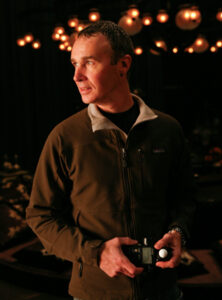 Tim Orr for All the Real Girls – David Gordon Green’s contemplative film about young love in a North Carolina mill town features breathtaking widescreen camerawork from Orr. He masterfully balances the locale’s natural beauty and industrial blight, and also captures light in a way that recalls ‘70s classics like Days of Heaven or McCabe and Mrs. Miller. One highlight is a montage of multi-hued skies and textile mills that immediately follows the film’s most severe, dramatic, and invigorating scene. This is Tim’s 2nd Chlotrudis nomination following a nod for Best Cinematography at the 7th Awards Ceremony for George Washington. –ck Tim Orr for All the Real Girls – David Gordon Green’s contemplative film about young love in a North Carolina mill town features breathtaking widescreen camerawork from Orr. He masterfully balances the locale’s natural beauty and industrial blight, and also captures light in a way that recalls ‘70s classics like Days of Heaven or McCabe and Mrs. Miller. One highlight is a montage of multi-hued skies and textile mills that immediately follows the film’s most severe, dramatic, and invigorating scene. This is Tim’s 2nd Chlotrudis nomination following a nod for Best Cinematography at the 7th Awards Ceremony for George Washington. –ck
Lance Acord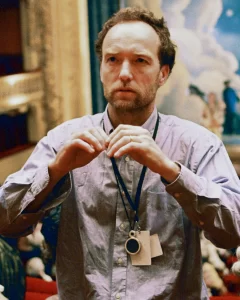 for Lost in Translation – Lost in Translation’scinematography exemplifies the tone of the film beautifully, and because the tone of the film is so quiet it is easily overlooked. Still shots of Scarlett Johanson staring out her hotel window, or wandering around the city, capture the feeling of alienation and wonder that her character experiences. The footage also shows that the film is in on the humor of the story exemplified in moments like the elevator shot of Billy Murray standing head and shoulder about the Japanese locals. This combination of loneliness and humor is the heart of the film, and is brought to us through the strength of Lance Acord’s cinematography. –im for Lost in Translation – Lost in Translation’scinematography exemplifies the tone of the film beautifully, and because the tone of the film is so quiet it is easily overlooked. Still shots of Scarlett Johanson staring out her hotel window, or wandering around the city, capture the feeling of alienation and wonder that her character experiences. The footage also shows that the film is in on the humor of the story exemplified in moments like the elevator shot of Billy Murray standing head and shoulder about the Japanese locals. This combination of loneliness and humor is the heart of the film, and is brought to us through the strength of Lance Acord’s cinematography. –im
 M. David Mullen for Northfork – Mullen employs classic methods of black & white photography while shooting Northfork in color. Visually evocative of silent-era filmmaking, the result is determinedly nostalgic, at once stark and richly detailed with its spectrum of grey tones. The desolation of the rapidly disappearing town and the approaching winter become palpable. Fanciful details such as a family of angels and an odd beast of stitched-together hides on stilts stand out against this quietly severe environment, creating a dream-like state wholly appropriate for The Polish Brothers’ allegorical storytelling.–hn M. David Mullen for Northfork – Mullen employs classic methods of black & white photography while shooting Northfork in color. Visually evocative of silent-era filmmaking, the result is determinedly nostalgic, at once stark and richly detailed with its spectrum of grey tones. The desolation of the rapidly disappearing town and the approaching winter become palpable. Fanciful details such as a family of angels and an odd beast of stitched-together hides on stilts stand out against this quietly severe environment, creating a dream-like state wholly appropriate for The Polish Brothers’ allegorical storytelling.–hn
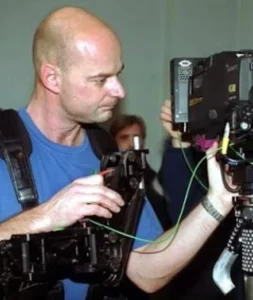 Tilman Büttner for Russian Ark – How could Russian Ark NOT be in the running for best cinematography? This film is a physical, technological, and cinematic feat in the field of cinematography. The film was shot in 24 frame/second high definition video which means that the normal distortion from video because is has had 30 frames/second when transferring to film’s 24 frames/second is gone. It was also shot in one actual take. Thanks to the fact that video doesn’t have the same limitations to single takes (film doesn’t come in 90 minute reels) this film is a _true_ one-take feature. The cinematographer, Tillman Butner, is the a sought after steadycam cinematographer which is perfect for this film since it will use his skills for the entire shoot. He ended up walking over one mile while shooting! Technical stuff out of the way, the film is also an alarmingly beautiful film every moment, the camera observes the life of the Hermitage, where the film takes place, as an observer – the unseen protagonist in fact. History was made with Russian Ark while at the same time cinema has been honored. —im Tilman Büttner for Russian Ark – How could Russian Ark NOT be in the running for best cinematography? This film is a physical, technological, and cinematic feat in the field of cinematography. The film was shot in 24 frame/second high definition video which means that the normal distortion from video because is has had 30 frames/second when transferring to film’s 24 frames/second is gone. It was also shot in one actual take. Thanks to the fact that video doesn’t have the same limitations to single takes (film doesn’t come in 90 minute reels) this film is a _true_ one-take feature. The cinematographer, Tillman Butner, is the a sought after steadycam cinematographer which is perfect for this film since it will use his skills for the entire shoot. He ended up walking over one mile while shooting! Technical stuff out of the way, the film is also an alarmingly beautiful film every moment, the camera observes the life of the Hermitage, where the film takes place, as an observer – the unseen protagonist in fact. History was made with Russian Ark while at the same time cinema has been honored. —im
 Olli Barbé, Michel Benjamin, Sylvie Carcedo-Dreujou, Laurent Charbonnier, Luc Drion, Laurent Fleutot, Philippe Garguil,Dominique Gentil, Bernard Lutic, Thierry Machado, Stéphane Martin, Fabrice Moindrot, Ernst Sasse, Michel Terrasse, andThierry Thomas for Winged Migration – Nominated as well in the Best Documentary category, this dramatic film has an astounding and varied array of cinematic beauty. Shot over three years on all seven continents, this is a work of visual beauty, not intended to be informational. From the Canadian geese in the Grand Canyon to the storks flying seemingly right beside you, the camera work is overwhelming. eeg Olli Barbé, Michel Benjamin, Sylvie Carcedo-Dreujou, Laurent Charbonnier, Luc Drion, Laurent Fleutot, Philippe Garguil,Dominique Gentil, Bernard Lutic, Thierry Machado, Stéphane Martin, Fabrice Moindrot, Ernst Sasse, Michel Terrasse, andThierry Thomas for Winged Migration – Nominated as well in the Best Documentary category, this dramatic film has an astounding and varied array of cinematic beauty. Shot over three years on all seven continents, this is a work of visual beauty, not intended to be informational. From the Canadian geese in the Grand Canyon to the storks flying seemingly right beside you, the camera work is overwhelming. eeg
|
|
Best Cast
|

Station Agent, The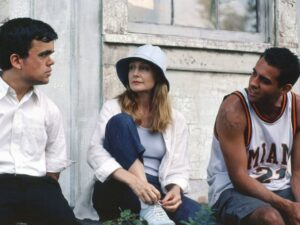 – Three unique characters with almost no life experiences in common come together in a typical town and somehow (sometimes against their will) find ways to connect with each other. Eventually, they come to the realization that they need one another. Peter Dinklage, Patricia Clarkson and Bobby Cannavale bring so much depth and humanity to their roles it’s hard to imagine anyone else playing any of them. –bg – Three unique characters with almost no life experiences in common come together in a typical town and somehow (sometimes against their will) find ways to connect with each other. Eventually, they come to the realization that they need one another. Peter Dinklage, Patricia Clarkson and Bobby Cannavale bring so much depth and humanity to their roles it’s hard to imagine anyone else playing any of them. –bg |
Event, The – Maverick Canadian filmmaker Thom Fitzgerald returns with this provocative, poignant study of AIDS and assisted suicide set in contemporary New York City. Heading up the film’s all-star indie ensemble is Don McKellar as Matt, an AIDS-ravaged man whose corpse is rolled out of his apartment in the very first scene to the acerbic strains of Norman Greenbaum’s “Spirit In The Sky”. Parker Posey is the D.A. in charge of investigating the mysterious circumstances surrounding Matt’s death, which coincided with a party simply known as “The Event”. In intricately interwoven flashbacks, she interviews friends and family members all marvelously played by Brent Carver, Sarah Polley, Jane Leeves, and Olympia Dukakis. –ck – Maverick Canadian filmmaker Thom Fitzgerald returns with this provocative, poignant study of AIDS and assisted suicide set in contemporary New York City. Heading up the film’s all-star indie ensemble is Don McKellar as Matt, an AIDS-ravaged man whose corpse is rolled out of his apartment in the very first scene to the acerbic strains of Norman Greenbaum’s “Spirit In The Sky”. Parker Posey is the D.A. in charge of investigating the mysterious circumstances surrounding Matt’s death, which coincided with a party simply known as “The Event”. In intricately interwoven flashbacks, she interviews friends and family members all marvelously played by Brent Carver, Sarah Polley, Jane Leeves, and Olympia Dukakis. –ck
Godzilla, Mothra, King Ghidora: All-Out Giant Monster Attack! 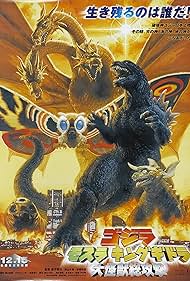 – Talk about a best cast! An all-star dream team of Japan’s legendary monsters – Talk about a best cast! An all-star dream team of Japan’s legendary monsters
is featured in the destined to be classic All Out Giant Monster Attack. Mothra, King Ghidorah and Barugon (he¹s the weird one that looks like a cross between a giant dog and a killer rabbit) join forces as the guardian spirits of Japan to protect the country from a resurfaced Godzilla. But it’s not just the monsters who shine in this film caught in the crossfire are
young reporter and her monster-obsessed military father. This recent entry into the Godzilla legend reinterprets his origin, features actual three-dimensional characters and makes sly references to everything from the failed American Godzilla to the recent horror craze in Japan. –nh
Lawless Heart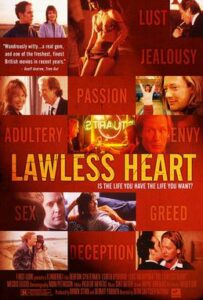 – The structure of this film cleverly lends itself to allowing a tour de force from each of its lead actors. The same story is told from three points of view, divided into three segments, as seen through the eyes of Bill Nighy, Tom Hollander and Douglas Henshall. All have a relationsip with a recently-deceased character, whose funeral is the opening event of the story. The audience gains subtle insight into the characters with each new version of the story. Sometimes the exact same scene is replayed from a different camera angle. Expectations and assumptions are challenged: Nighy’s restraint and calmness are revealed to be self-loathing and boredom. Hollander’s increasingly-confusing behavior is drawn from deep-seated grief and pain; and Smith’s flightiness cannot hide her nurturing streak. Henshall’s boorish Bohemian becomes a troubled Romantic soul who can’t get a break. Their intricate relationships with the women, both long-term and newly-met, in their lives offer a fascinating and very authentic glimpse into human behavior, especially those things we do when we feel we must begin anew in the face of loss. —pa – The structure of this film cleverly lends itself to allowing a tour de force from each of its lead actors. The same story is told from three points of view, divided into three segments, as seen through the eyes of Bill Nighy, Tom Hollander and Douglas Henshall. All have a relationsip with a recently-deceased character, whose funeral is the opening event of the story. The audience gains subtle insight into the characters with each new version of the story. Sometimes the exact same scene is replayed from a different camera angle. Expectations and assumptions are challenged: Nighy’s restraint and calmness are revealed to be self-loathing and boredom. Hollander’s increasingly-confusing behavior is drawn from deep-seated grief and pain; and Smith’s flightiness cannot hide her nurturing streak. Henshall’s boorish Bohemian becomes a troubled Romantic soul who can’t get a break. Their intricate relationships with the women, both long-term and newly-met, in their lives offer a fascinating and very authentic glimpse into human behavior, especially those things we do when we feel we must begin anew in the face of loss. —pa

Marion Bridge – While Daniel McIvor’s screenplay provides the solid base, and Wiebke von Carolsfeld’s smart direction pulls it all together, the remarkable, mostly female cast of Marion Bridge makes us believe and makes us care. This tale of three sisters dredging up and dealing with their troubled past could easily have veered into melodrama, yet the smart, and surprisingly funny performances by the three leads, Molly Parker, Rebecca Jenkins, and Stacy Smith, make it all seem familiar and real. Parker in particular tackles the difficult role of recovering alcoholic and incest survivor and makes her Agnes both realistic and likable. Throw in dying Mom, Maguerite McNeil, secret daughter Ellen Page, sexually ambiguous friend Emmy Alcorn, and a return to sanity performance by Ashley MacIsaac, and you’ve got a cast that can’t miss. –mrc
Open Hearts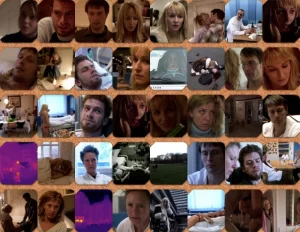 – The characters in Open Hearts are surprised by a disabling accident and the fallout of an adulterous affair. Nikolaj Lie Kaas, as Joachim, reflects a withering away of his spirit as the light leaves his eyes and his face becomes an ugly mask. Sonja Richter shows us his fiancee’s fragility and confusion. Mads Mikkelsen, is the doctor who yields to passion despite himself, tottering on an emotional seesaw, and Paprika Steen is his wife trying to hold the family together against all odds. Superb supporting performances are given by Stine Bjerregaard as the daughter Stine andBirthe Newmann, as the deadpan nurse.–djy – The characters in Open Hearts are surprised by a disabling accident and the fallout of an adulterous affair. Nikolaj Lie Kaas, as Joachim, reflects a withering away of his spirit as the light leaves his eyes and his face becomes an ugly mask. Sonja Richter shows us his fiancee’s fragility and confusion. Mads Mikkelsen, is the doctor who yields to passion despite himself, tottering on an emotional seesaw, and Paprika Steen is his wife trying to hold the family together against all odds. Superb supporting performances are given by Stine Bjerregaard as the daughter Stine andBirthe Newmann, as the deadpan nurse.–djy
Take Care of My Cat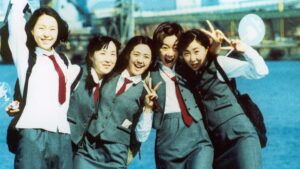 – Many recent American-released Korean films have felt more like bad versions of Hong Kong films, but Take Care of My Cat, thanks to the strength of the universal story and the strong ensemble show that original stories are also being created in their growing film industry, ready to make a deep impact in the future of world cinema. The women who comprise the ensemble cast of Korea’s Take Care of My Cat make up the core of this unusual coming-of-age film. Take Care of My Catfollows the changes that these five friends encounter as they enter into their adult lives, and the strain it puts on the closeness they enjoyed in high school. –im – Many recent American-released Korean films have felt more like bad versions of Hong Kong films, but Take Care of My Cat, thanks to the strength of the universal story and the strong ensemble show that original stories are also being created in their growing film industry, ready to make a deep impact in the future of world cinema. The women who comprise the ensemble cast of Korea’s Take Care of My Cat make up the core of this unusual coming-of-age film. Take Care of My Catfollows the changes that these five friends encounter as they enter into their adult lives, and the strain it puts on the closeness they enjoyed in high school. –im |
|
Best Documentary
|

 – Capturing the Friedmans began production as the story of “Silly Billy,” the number one birthday party clown in New York City, but changed when director Andrew Jarecki noticed that there were aspects of his subject’s family history that were difficult for him to discuss. It became the story of a father and son from a quiet, upper middle class town on Long Island who are accused of a terrible series of crimes. In its examination of the alleged crimes, the film presents the views of the family members, the families of the victims, the police, and numerous experts, and we are given a powerful look at the way people’s perspectives affect their beliefs, but no declaration of absolute truth. –bg – Capturing the Friedmans began production as the story of “Silly Billy,” the number one birthday party clown in New York City, but changed when director Andrew Jarecki noticed that there were aspects of his subject’s family history that were difficult for him to discuss. It became the story of a father and son from a quiet, upper middle class town on Long Island who are accused of a terrible series of crimes. In its examination of the alleged crimes, the film presents the views of the family members, the families of the victims, the police, and numerous experts, and we are given a powerful look at the way people’s perspectives affect their beliefs, but no declaration of absolute truth. –bg |
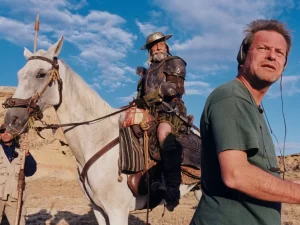 Lost in La Mancha – Lost in La Mancha chronicles the doomed attempt by director Terry Gilliam to fulfill a career-long ambition, making a movie of Cervantes’s novel Don Quixote. Bedeviled by a fiendishly complex financing scheme, a sickened and injured star, bombarding NATO jets, and a drought-ending, gully-washing thunderstorm, the production slowly (and sometimes literally) topples beneath an accumulating weight of bad luck, poor oversight, and grandiose planning. Directors Keith Fulton and Louis Pepe give us a fascinating behind-the-scenes look at an unfolding movie industry disaster. –jp Lost in La Mancha – Lost in La Mancha chronicles the doomed attempt by director Terry Gilliam to fulfill a career-long ambition, making a movie of Cervantes’s novel Don Quixote. Bedeviled by a fiendishly complex financing scheme, a sickened and injured star, bombarding NATO jets, and a drought-ending, gully-washing thunderstorm, the production slowly (and sometimes literally) topples beneath an accumulating weight of bad luck, poor oversight, and grandiose planning. Directors Keith Fulton and Louis Pepe give us a fascinating behind-the-scenes look at an unfolding movie industry disaster. –jp
 O.T.: Our Town – Compton, CA is best-known for its mention in rap songs, its gang wars, and its basketball players. For producer/director Scott Hamilton Kennedy, Compton will be best known for the town where the woman he loves teaches. That woman, Catherine Borek, saw in the students of Dominguez High, a possibility to rise above the town’s tarnished image by putting on the first play in twenty years. What better vehicle to invite a nation of viewers to see beyond the stereotype of a town than Thornton Wilder’s “Our Town.” Borek and the students of Dominguez High manage to make “Our Town” relevant and important to the town of Compton, and Kennedy, with skillful artistry shares that with the fortunate viewers of this film. This powerfully inspirational tale deserves a much wider audience to show how below the surface, their town is just like ours. –mrc O.T.: Our Town – Compton, CA is best-known for its mention in rap songs, its gang wars, and its basketball players. For producer/director Scott Hamilton Kennedy, Compton will be best known for the town where the woman he loves teaches. That woman, Catherine Borek, saw in the students of Dominguez High, a possibility to rise above the town’s tarnished image by putting on the first play in twenty years. What better vehicle to invite a nation of viewers to see beyond the stereotype of a town than Thornton Wilder’s “Our Town.” Borek and the students of Dominguez High manage to make “Our Town” relevant and important to the town of Compton, and Kennedy, with skillful artistry shares that with the fortunate viewers of this film. This powerfully inspirational tale deserves a much wider audience to show how below the surface, their town is just like ours. –mrc
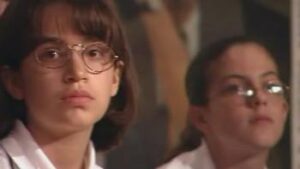 Spellbound – Who knew Spellbound, a documentary that follows eight contestants on their road to the National Spelling Bee, was a suspense film? As we follow eight young contestants on their way through or after just having won their regional spelling bees preparing for the National Spelling Bee, we get to know a bit about them and their families. Each family came from diverse backgrounds and geographic locations, and each had different outlooks on the Bee and methods of preparation. Director Jeffrey Blitz does a phenomenal job exploring the similarities and differences of such a varied collection of subjects. We can only imagine how many potential candidates were intereviewed and filmed before the final eight ‘stars’ of Spellbound were selected. This documentary was so good it was even nominated in the Best Movie category. –mrc Spellbound – Who knew Spellbound, a documentary that follows eight contestants on their road to the National Spelling Bee, was a suspense film? As we follow eight young contestants on their way through or after just having won their regional spelling bees preparing for the National Spelling Bee, we get to know a bit about them and their families. Each family came from diverse backgrounds and geographic locations, and each had different outlooks on the Bee and methods of preparation. Director Jeffrey Blitz does a phenomenal job exploring the similarities and differences of such a varied collection of subjects. We can only imagine how many potential candidates were intereviewed and filmed before the final eight ‘stars’ of Spellbound were selected. This documentary was so good it was even nominated in the Best Movie category. –mrc
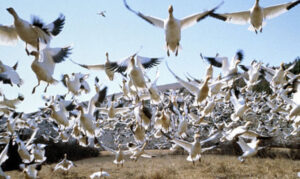 Winged Migration – Putting Winged Migration up against any other documentary this year seems like an unfair fight on the surface. Jacques Perrin and his crew not only spent 3+ years making this film, they lived with and helped train a myriad of migratory bird species, and constructed special “flying machines” in order to obtain up-close-and-personal footage of the creatures. But this is not a blood-sweat-and-tears contest. The proof of this film’s greatness lies in the resulting 85 minutes, which fly by (pun intended), astonishingly enough, with virtually no narration or homosapiens in sight. One scene of a Blue Macaw prying open it’s cage door and escaping offers more emotional gratification than screening 1000 Julia Roberts multiplex-hell pictures. And you don’t hate yourself in the morning. You come away from this film with a renewed sense of respect for not only these birds, but nature itself (and your own little place in the scheme of things), as trite as that might sound. Trust me on this: after you see this film, it won’t seem trite at all. –rfg Winged Migration – Putting Winged Migration up against any other documentary this year seems like an unfair fight on the surface. Jacques Perrin and his crew not only spent 3+ years making this film, they lived with and helped train a myriad of migratory bird species, and constructed special “flying machines” in order to obtain up-close-and-personal footage of the creatures. But this is not a blood-sweat-and-tears contest. The proof of this film’s greatness lies in the resulting 85 minutes, which fly by (pun intended), astonishingly enough, with virtually no narration or homosapiens in sight. One scene of a Blue Macaw prying open it’s cage door and escaping offers more emotional gratification than screening 1000 Julia Roberts multiplex-hell pictures. And you don’t hate yourself in the morning. You come away from this film with a renewed sense of respect for not only these birds, but nature itself (and your own little place in the scheme of things), as trite as that might sound. Trust me on this: after you see this film, it won’t seem trite at all. –rfg
|
|
Best Short Film
|

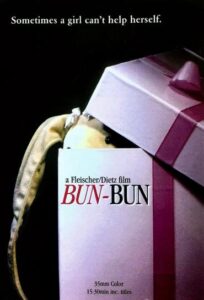 Chlotrudis Award! Chlotrudis Award!
Bun-Bun by Katie Fleischer (USA – 16 minutes) – One look at Bun-Bun and it’s love at first sight. All hell breaks loose when a little girl refuses to accept that the love of her life belongs to another. What’s a parent to do?
Katie Fleischer graduated from New York University’s Tisch School of the Arts Graduate Program where she won awards for writing and directing. Her short film The Swimming Lesson was distributed throughout European television on Canal +, Channel 4, and several other stations across Europe and Latin America HBO. Since graduating, she has worked as a reader in development for several film companies, as well as writing copy for movie posters and retitling movies for Miramax and Universal Films. She has also adapted a ‘western style’ comic book, Trio Grandes, for the Brazilian company, Conspiracy Films. She has written the spec scripts, To The Rescue, The Last Resort and Upper East Side Story. Before making Bun-Bun, her last directing gig was Shakespeare’s Twelfth Night, for The Dreamyard Project working with twelve and thirteen year old, inner city kids at P.S. 306 in the Bronx. Bun-Bunwas the first of hopefully, many collaborations between her and her husband Jason Dietz. They are in development for a low budget feature. |

 Audience Award! Audience Award!
Wet Dreams and False Images by Jesse Epstein (US – 11 min.) – Dee-Dee The Barber is a self proclaimed ‘booty expert man,’ who covers his corner of the shop with magazine cutouts of women. But, when Dee-Dee is introduced to the art of airbrushing, he may never look at ‘his wall of beauty’ in the same way again.
\Jesse received an MA in documentary film and gender studies from NYU. She has directed and produced documentary both nationally and in Africa, India and the Netherlands. She has worked extensively with the media activist organizations Deep Dish TV, Paper Tiger TV, and the Independent Media Center. Her PSA on teenage girls and body image appeared at the Media that Matters Film Festival, presented in conjunction with the Human Rights Watch International Film Festival. She is currently working with Global Action Project and The International Rescue Committee to produce a film with refugee youth. She also graduated from Brookline High School in 1989. |
2nd Place Chlotrudis Award & Audience Award!
Blue Snow by Zion Rubin (Israel – 26 min.) – Not long after Tatjana drops off her teenage daughter Anna at a discotheque in central Tel-Aviv, it is announced on the news that a suicide-bomber detonated himself at its entrance, killing and wounding dozens. The film follows both Michael, Anna s younger brother, as he waits at home for his sister s return, and Tatyana, as she searches frantically for her daughter. The film refers to a true event, which took place in May 2001, incorporating genuine footage from that night, on which 24 teenagers were killed. The film is based on their stories.
In 2003 Zion Rubin wrote, directed, filmed and edited eight short dramas for Israeli TV. Blue Snow has taken part in festivals in South America and Europe and will be screened in Boston and Houston. In 2001 Zion wrote and directed Caravan 841 (50 minute drama), winning Best Script Award at the Jerusalem Film Festival 2001 and The Certificate of Merit at the 2002 Golden Gates Awards Competition, San Francisco, as well as screenings in many other international festivals. In 2001 Zion also wrote and directed Moon Hill, an original six-part drama series that premiered at The Haifa Film Festival 2001. For five years Zion has been series manager, script-supervisor, photographer and editor of the ongoing multi-prize winning project “Children Create Films” through which eight to twelve year-olds make short films. He is currently writing a full-length feature film called The Last Week. |
| Beat Box Philly by Liz Goldberg and Warren Bass (USA – 5 minutes) – Beat Box Philly is an animated cityscape that explores the neighborhoods, the identities and polarities, the popular associations, and the visual rhythms of the streets of Philadelphia,to the tune of mouth-generated ‘beatbox’ sounds by performance artist Edward Snyder(of the Philadelphia Fringe Festival).
Filmmaker Warren Bass and artist Liz Goldberg haev been collaborating on animated films since 1999. Their collaborative work has received four international first prizes, and juried recognition in over two dozen festivals in ten countries, as well as exhibitions on Public Television.
Career Suicide by Dan Huber and Alex Kang (US – 13 minutes) – Frustrated in life, a frazzled young woman finds no relief in the afterlife: after accidentally falling on a pair of scissors, Sandy finds herself trapped in a corporate purgatory where working your way up the ladder appears to be the only way out.Friends since 1985, Dan (left) and Alex attended the same schools from seventh grade through the film program at NYU. After graduation, Alex moved out to Los Angeles where he worked in marketing and publicity for Buena Vista International. He is currently an Associate Producer on “The Sharon Osbourne Show.” Dan stayed in New York where he worked in Production and Development at Miramax Films. He currently works in the Character Properties department at Sesame Workshop.
Dental Farmer by Ellen Brodsky and Dunya Alwan (USA – 15 minutes) – Dental Farmer is the story of Dr. Art Rybeck, an eccentric 77 year old dentist who loves the natural world as much as he loves dentistry. The film explores how he has combined these passions in a one room free dental clinic on his organic farm in West Virginia. The clinic is staffed by volunteers who originally used the free clinic themselves. Dental Farmer shares one man’s unique response to the lack of dental care in a rural area.
Dental Farmer was produced by Dunya Alwan and Ellen Brodsky, who have worked together and separately as videographers, community activists and in the human services for over a decade. Their first video project together was Are Giraffes Really that Tall?, a short about a cooperative daycare center in Cambridge, Massachusetts. Ellen Brodsky currently is co-producing an NEH funded film with Michal Goldman about a Jewish housing cooperative in the Bronx in the 1930s.
in sight by Asitha Ameresekere (UK – 15 minutes) – in sight is about a man who decides to see things differently. Over 24 hours he must choose between continuing to face these new challenges or return to his old way of life. His experiences are mirrored by interviews with ordinary people facing similar questions in their own lives.
After working as an English teacher in Sri Lanka, Asitha received an MFA in Directing at the California Institute of the Arts. When he returned to the UK, he directed music videos, commercials and wrote “Flat,” a comedy drama television series. He is also a published short story author. in sight is his first short film.
Robot Rumpus by Jason Dunn (USA – 19 min.) – A scientist sends his hideous robot son to elementary school to learn to play with real kids. It doens’t go very well.
Jason Dunn is a Los Angeles-based visual effects artist and filmmaker. He has created images for a number of films and television shows and has started his own visual effects company, Robot Rumpus VFX.
The Show by Cruz Angeles (US – 8 min.) – What does it mean when history is commodified, and more specifically, the deliberate end of someone’s life as ‘art’? The Show is a gritty dramatic commentary that documents the last moments of one man’s life only to witness the graphic photograph of his lynching as it resurfaces in a surprising contemporary setting.
Cruz is an award-winning filmmaker from NYU s graduate film program. He was awarded a Director’s Guild of America Award for Best Latino Student Filmmaker in 2001. His student films have gained him much recognition in the festival circuit. Abuela’s Revolt won Second Place at the Voladero International Film Festival (Mexico) and since its world premiere screening at South By SouthWest 2001 it has traveled internationally to more than thirty film festivals. Abuela’s Revolt was also broadcast on PBS s REELNY, TELEMUNDO (KHRR) and various affiliates of UPN, NBC and CBS through the Latino American Filmmakers series. Cardboard Hands won Best Short Subject at the Ajijic International Film Festival, 2002 (MEXICO) and The Show recently won the Best Student Film prize at the Woodstock Film Festival, 2003.
Tomato Love by Joey Kan (US – 7 min.) – Tomato Love is a story about a boy in search of his tomato. He bonds with a tomato in the beginning of the animation only to have it taken away from him by a cruel twist of fate. He then spends the rest of his time searching for his lost tomato in places like the supermarket or the forest. Tomato Love uses a variety of digital animation techniques composited using After Effects.
Joey Kan received a BFA in Film / Animation / Video from the Rhode Island School of Design, Providence Rhode Island. Before RISD he was involved in several community art programs in Hong Kong which involved mainly mural painting and assistant art teaching. He likes to eat tomatoes at least twice a week.
Two by Two by Emily Susanne Dodge (US – 9 min.) – What really happened on Noahs’ Ark? Here is the animals’ version.
Emily Dodge, a recent graduate of Rhode Island School of Design, did the film ‘Two By Two’ as her senior degree project. She hopes to change the current non-environmental outlook to a more accomodating and more open view of the world around us.
Unearthed by Christina Spangler (US – 8 min.) – After a blind struggle for life against a hungry ferret, an unearthed potato is given a wondrous glimpse into the visible world. Using its newfound sight, the curious tuber happens upon a discarded bag of potato chips and must then come to terms with its ownmortality.
Born a US citizen in Bermuda in 1980, Christina Spangler obtained her BFA in Film/Animation/Video from Rhode Island School of Design in June 2002. ‘Unearthed’ was her senior degree project, one of three vegetable hemed stop-motion films.
Woman by Signe Baumane (US – 10 min.) – Woman is a visual poem about a creation of Woman (she is poured out of Moon) and her two ways to encounter a man — in one way she brings him Death, in the other she gives him Love.
Signe Baumane was born in Latvia, educated in Russia and has been working in the U.S. since 1995. After extensive work in film and illustration in Europe, she began an extensive collaboration with artist Bill Plympton. Her short film Natasha was nominated in the Best Short Film Category at the 8th Annual Chlotrudis Awards. |
|

 Lost in Translation – With moving lead performances by Bill Murray and Scarlett Johansson, assured and restrained direction from Sofia Coppola, and the stunning backdrop of Tokyo, Japan, Lost in Translation became an unexpectedly well-received breath of fresh air. Obviously, the young director has a famous surname to live up to, but with an insightful script (written as a lengthy sort of prose-poem), wonderful cinematography, the natural locations of otherworldy Tokyo, and the inspired casting that highlights the genuine chemistry between a comedic super-star and a young up-and-coming actress, Lost in Translation steps out from the umbrella of that name and becomes a unique and wonderfully moving tribute to the nature of friendship, love, and that happy-sad feeling that comes from spending two hours with wonderful characters who you don’t want to leave behind in the theatre – but that you wish were a part of your everyday life. –cm
Lost in Translation – With moving lead performances by Bill Murray and Scarlett Johansson, assured and restrained direction from Sofia Coppola, and the stunning backdrop of Tokyo, Japan, Lost in Translation became an unexpectedly well-received breath of fresh air. Obviously, the young director has a famous surname to live up to, but with an insightful script (written as a lengthy sort of prose-poem), wonderful cinematography, the natural locations of otherworldy Tokyo, and the inspired casting that highlights the genuine chemistry between a comedic super-star and a young up-and-coming actress, Lost in Translation steps out from the umbrella of that name and becomes a unique and wonderfully moving tribute to the nature of friendship, love, and that happy-sad feeling that comes from spending two hours with wonderful characters who you don’t want to leave behind in the theatre – but that you wish were a part of your everyday life. –cm – Danny Boyle gave us a bit of a scare with films like A Life Less Ordinary and The Beach, but he clearly found his way back to the land of the independent and gave us the kind of scare we like with 28 Days Later… On the surface, it may look like a genre film – an English Dawn of the Dead – but there are scenes of great beauty and humanity, digital video is used to create images reminiscent of impressionist painting, and concepts like family, civilization, and ethics are brought in with considerable subtlety. –bg
– Danny Boyle gave us a bit of a scare with films like A Life Less Ordinary and The Beach, but he clearly found his way back to the land of the independent and gave us the kind of scare we like with 28 Days Later… On the surface, it may look like a genre film – an English Dawn of the Dead – but there are scenes of great beauty and humanity, digital video is used to create images reminiscent of impressionist painting, and concepts like family, civilization, and ethics are brought in with considerable subtlety. –bg

 – With the assuredness of a seasoned vet, first-time director Wiebke von Carolsfeld has created a family drama that is filled with warmth, humor, drama, and refreshingly free of cliches. Working with a smart script by playwright Daniel McIvor, who adpated th screenplay from his own work, and a terrific cast of talented actors, von Carolsfeld brings the story of three sisters reunited at their mother’s deathbed, struggling to deal with the shared, hidden past that guides their lives. Molly Parker, Rebecca Jenkins, and Stacy Smith bring taut, honest performances to the three sisters, and the evocative setting of Cape Breton Isle brings forth both the isolation each endure, and the rural simplicity that keeps them together. Already championed by the Chlotrudis Society in the spring of 2003 when we presented the film at the Boston International Festival of Women’s Cinema, Marion Bridgedeserves a much wider audience and the exposure that a Buried Treasure nomination brings. –mrc
– With the assuredness of a seasoned vet, first-time director Wiebke von Carolsfeld has created a family drama that is filled with warmth, humor, drama, and refreshingly free of cliches. Working with a smart script by playwright Daniel McIvor, who adpated th screenplay from his own work, and a terrific cast of talented actors, von Carolsfeld brings the story of three sisters reunited at their mother’s deathbed, struggling to deal with the shared, hidden past that guides their lives. Molly Parker, Rebecca Jenkins, and Stacy Smith bring taut, honest performances to the three sisters, and the evocative setting of Cape Breton Isle brings forth both the isolation each endure, and the rural simplicity that keeps them together. Already championed by the Chlotrudis Society in the spring of 2003 when we presented the film at the Boston International Festival of Women’s Cinema, Marion Bridgedeserves a much wider audience and the exposure that a Buried Treasure nomination brings. –mrc – Commissioned by the Royal Winnipeg Ballet to film its stage production of Bram Stoker’s classic horror tale, Guy Maddin took his footage and gleefully ran wild with it in the editing room. Piling on the circa-1925 effects (iris-ins and outs, intertitles, superimpositions, one-color screen tints), he focused less on the choreography but preserved (and emphasized) the production’s grand, Mahler-drenched score. The results are like Nosferatu transformed into a hallucinatory silent musical, with the suave, striking Zhang Wei-Qiang in the title role. Equally innovative and seductive, you’ve never seen the legend of Dracula told remotely like this. –ck
– Commissioned by the Royal Winnipeg Ballet to film its stage production of Bram Stoker’s classic horror tale, Guy Maddin took his footage and gleefully ran wild with it in the editing room. Piling on the circa-1925 effects (iris-ins and outs, intertitles, superimpositions, one-color screen tints), he focused less on the choreography but preserved (and emphasized) the production’s grand, Mahler-drenched score. The results are like Nosferatu transformed into a hallucinatory silent musical, with the suave, striking Zhang Wei-Qiang in the title role. Equally innovative and seductive, you’ve never seen the legend of Dracula told remotely like this. –ck

 for Lost in Translation – After her stunning debut, The Virgin Suicides (for which she earned a Best Adapted Screenplay Chlotrudis nomination), Sofia Coppola’s second feature finds her even more in control. Her direction is deft and economical and she elicits fantastic performances from her leads: Scarlett Johansson in a career defining role and Bill Murray in a career changing one. Coppola wrote, directed and produced the ambitious yet simple story of two Americans figuratively (and occasionally actually) lost in Tokyo. Lost in Translation is a wonderfully quirky and touching portrait of one unique friendship. –nh
for Lost in Translation – After her stunning debut, The Virgin Suicides (for which she earned a Best Adapted Screenplay Chlotrudis nomination), Sofia Coppola’s second feature finds her even more in control. Her direction is deft and economical and she elicits fantastic performances from her leads: Scarlett Johansson in a career defining role and Bill Murray in a career changing one. Coppola wrote, directed and produced the ambitious yet simple story of two Americans figuratively (and occasionally actually) lost in Tokyo. Lost in Translation is a wonderfully quirky and touching portrait of one unique friendship. –nh & Robert Pulcini for American Splendor – Berman and Pulcini create an engaging story of an average life, that of comic book writer Harvey Pekar. Using a unique combination of acted scenes, comic book visuals, commentary by the real-life subjects, and old TV footage, the film slips between several planes of reality. Who is the real Harvey and why does he matter? is the question asked by the directors. –djy
& Robert Pulcini for American Splendor – Berman and Pulcini create an engaging story of an average life, that of comic book writer Harvey Pekar. Using a unique combination of acted scenes, comic book visuals, commentary by the real-life subjects, and old TV footage, the film slips between several planes of reality. Who is the real Harvey and why does he matter? is the question asked by the directors. –djy

 for the role of Ann in My Life Without Me – At the age of 25, Canadian actress Sarah Polley has already attained veteran status in the film world and she proves it is well earned in her fourth Chlotrudis Awards nomination. (Polley was previously nominated for The Claim, Go, and The Sweet Hereafter.) As terminally ill Ann, a young woman struggling to make ends meet and to provide an easy transition for her family after her death, Polley exudes a level of dignity and grace difficult to maintain in such extreme circumstances. As Ann tries to balance the needs of her loved ones with her desire to experience what she has previously denied herself, Polley subtly supports and fuels every other actor’s performance in the film. In a role as challenging yet unassuming as this one, few actresses could have pulled it off, but it is now clear that Sarah Polley will continue to captivate and astound us. –sc
for the role of Ann in My Life Without Me – At the age of 25, Canadian actress Sarah Polley has already attained veteran status in the film world and she proves it is well earned in her fourth Chlotrudis Awards nomination. (Polley was previously nominated for The Claim, Go, and The Sweet Hereafter.) As terminally ill Ann, a young woman struggling to make ends meet and to provide an easy transition for her family after her death, Polley exudes a level of dignity and grace difficult to maintain in such extreme circumstances. As Ann tries to balance the needs of her loved ones with her desire to experience what she has previously denied herself, Polley subtly supports and fuels every other actor’s performance in the film. In a role as challenging yet unassuming as this one, few actresses could have pulled it off, but it is now clear that Sarah Polley will continue to captivate and astound us. –sc for the role of Lilja in Lilja 4-Ever – Lukas Moodysson’s unflinching study of teenage abandonment and prostitution in a former Soviet Republic centers on Lilja, who is as likable and complex a protagonist as those in the director’s other features. However, her fate is less sunny, as she struggles to survive in an increasingly brutal world where her freedom is gradually obliterated. As Lilja, Akinshina (who had only acted in one prior feature, Sergei Bodrov Jr.’s Sisters) gives an incredibly natural and nuanced performance. Scenes with her young co-star Artyom Bogucharsky are particularly affecting in their sensitivity and honesty. –ck
for the role of Lilja in Lilja 4-Ever – Lukas Moodysson’s unflinching study of teenage abandonment and prostitution in a former Soviet Republic centers on Lilja, who is as likable and complex a protagonist as those in the director’s other features. However, her fate is less sunny, as she struggles to survive in an increasingly brutal world where her freedom is gradually obliterated. As Lilja, Akinshina (who had only acted in one prior feature, Sergei Bodrov Jr.’s Sisters) gives an incredibly natural and nuanced performance. Scenes with her young co-star Artyom Bogucharsky are particularly affecting in their sensitivity and honesty. –ck

 for the role of Dan Mahowny in Owning Mahowny – This is Phil’s 3rd Chlotrudis nomination following a nod for Best Supporting Actor at the 5th, and a win for Best Supporting Actor at the 6th Awards ceremonies. In addition, Phil was awarded the Gertrudis Award at the 5th Annual Awards. In this film about a banker who has a serious gambling problem and uses the bank’s big accounts to supply his habit, Philip Seymour Hoffman’s performance is, as Roger Ebert describes it “a masterpiece of discipline and precision.” Going all out is nothing new to Hoffman, and in this role, his compulsion to gamble to the exclusion of all else is conveyed in every shot of his bent head or muttered bet. Hoffman’s character doesn’t care if we don’t like him, he is gambling and that is all he cares about. –eeg
for the role of Dan Mahowny in Owning Mahowny – This is Phil’s 3rd Chlotrudis nomination following a nod for Best Supporting Actor at the 5th, and a win for Best Supporting Actor at the 6th Awards ceremonies. In addition, Phil was awarded the Gertrudis Award at the 5th Annual Awards. In this film about a banker who has a serious gambling problem and uses the bank’s big accounts to supply his habit, Philip Seymour Hoffman’s performance is, as Roger Ebert describes it “a masterpiece of discipline and precision.” Going all out is nothing new to Hoffman, and in this role, his compulsion to gamble to the exclusion of all else is conveyed in every shot of his bent head or muttered bet. Hoffman’s character doesn’t care if we don’t like him, he is gambling and that is all he cares about. –eeg for the role of Det. Lt. Agustín Rejas in The Dancer Upstairs – Javier Bardem brings his usual elegant gravity to the role of Detective Lieutenant Agustín Rejas. Investigating a revolutionary terrorist group similar to Peru’s Shining Path, which has penetrated society to the extent that much of the machine-gunning and bombing is done by children, Rejas feels betrayed by his own deep belief in a more populist government. At the same time, he is drawn to his daughter’s dance teacher, despite never knowing who he can trust. The eloquence of Bardem’s performance is such that it is never upstaged by the unusual visual violence in this film. This is Bardem’s second nomination (following his nod for Before Night Falls at the 8th Awards). –jy
for the role of Det. Lt. Agustín Rejas in The Dancer Upstairs – Javier Bardem brings his usual elegant gravity to the role of Detective Lieutenant Agustín Rejas. Investigating a revolutionary terrorist group similar to Peru’s Shining Path, which has penetrated society to the extent that much of the machine-gunning and bombing is done by children, Rejas feels betrayed by his own deep belief in a more populist government. At the same time, he is drawn to his daughter’s dance teacher, despite never knowing who he can trust. The eloquence of Bardem’s performance is such that it is never upstaged by the unusual visual violence in this film. This is Bardem’s second nomination (following his nod for Before Night Falls at the 8th Awards). –jy

 for the role of Olivia Harris in The Station Agent – 2003 was the year of Patricia Clarkson. An unavoidable force in independent cinema since she first came to attention in 1998’s High Art, she was the toast of the town at last year’s Sundance Film Festival with three acclaimed new films. The Station Agent was her meatiest role, and Clarkson shines as the befuddled painter Olivia, who befriends the dwarfish loner Finbar McBride almost against his will. But as with all of her roles, there is more to this character than meets the eye, and she portrays the sorrow of loss and the joy of friendship with sublime honesty, avoiding overly showy performance even in moments of indescribable grief. With the help of a wonderful script and a superb circle of actors, Clarkson brings in her strongest role to date. –cm
for the role of Olivia Harris in The Station Agent – 2003 was the year of Patricia Clarkson. An unavoidable force in independent cinema since she first came to attention in 1998’s High Art, she was the toast of the town at last year’s Sundance Film Festival with three acclaimed new films. The Station Agent was her meatiest role, and Clarkson shines as the befuddled painter Olivia, who befriends the dwarfish loner Finbar McBride almost against his will. But as with all of her roles, there is more to this character than meets the eye, and she portrays the sorrow of loss and the joy of friendship with sublime honesty, avoiding overly showy performance even in moments of indescribable grief. With the help of a wonderful script and a superb circle of actors, Clarkson brings in her strongest role to date. –cm for the role of Joy Burns in Pieces of April – She is dying of breast cancer, sick mostly of being treated with fearful delicacy, breezily resigned to a difficult reunion with her black sheep daughter. Patricia Clarkson’s ironically named character, Joy, has a venomous sarcasm that leaves no one in her family untouched, but we in the audience can laugh from our safe remove. This terrific performance is Clarkson’s fourth Best Supporting Actress nomination from Chlotrudis. She received a nod at the 5th Awards ceremony for her role in High Art, last year for Far From Heaven, and this year for The Station Agent. –djy
for the role of Joy Burns in Pieces of April – She is dying of breast cancer, sick mostly of being treated with fearful delicacy, breezily resigned to a difficult reunion with her black sheep daughter. Patricia Clarkson’s ironically named character, Joy, has a venomous sarcasm that leaves no one in her family untouched, but we in the audience can laugh from our safe remove. This terrific performance is Clarkson’s fourth Best Supporting Actress nomination from Chlotrudis. She received a nod at the 5th Awards ceremony for her role in High Art, last year for Far From Heaven, and this year for The Station Agent. –djy
 for the role of Volodya in Lilja 4-Ever – As Lilja’s only friend, and himself a victim of circumstance, Bogucharsky’s Volodya is full of tough talk, and yet utterly vulnerable at the same time. He is like a little brother to her, and as such relies on her for food, shelter, and emotional support. In turn he does what he can to help her, offering advice and a place to hide. We see his bravado is really bravery; a defense against a violent and loveless life. What he manages to do that the other neighborhood boys and the adults in their world do not, is remain good at heart. He would rather give up everything than to become like them. An evocative and resonant performance. –eeg
for the role of Volodya in Lilja 4-Ever – As Lilja’s only friend, and himself a victim of circumstance, Bogucharsky’s Volodya is full of tough talk, and yet utterly vulnerable at the same time. He is like a little brother to her, and as such relies on her for food, shelter, and emotional support. In turn he does what he can to help her, offering advice and a place to hide. We see his bravado is really bravery; a defense against a violent and loveless life. What he manages to do that the other neighborhood boys and the adults in their world do not, is remain good at heart. He would rather give up everything than to become like them. An evocative and resonant performance. –eeg

 Lost in Translation, screenplay by Sofia Coppola – With Lost In Translation, Sofia Coppola neatly captures the slightly Twilight Zone‘ish feeling of being out of touch with everything and everyone around you. Yet she does so with such unassuming ease and good humor that you may not even be aware that such serious themes exist beneath the candy-colored surface of the film. As you marvel at Bill Murray’s and Scarlett Johannson’s seemingly effortless interplay, don’t forget that their latitude is in part enabled by Coppola’s script. It’s strategic absence of conventional plotpoints leaves them miles of glorious space for emotional exploration and character development. If that weren’t enough, Coppola’s script is loaded with a non-stop parade of stranger-in-a-strange-land iconic imagery that you won’t shake for days… such as the by now infamous Murray-on-the-hotel-bed shot. –rfg
Lost in Translation, screenplay by Sofia Coppola – With Lost In Translation, Sofia Coppola neatly captures the slightly Twilight Zone‘ish feeling of being out of touch with everything and everyone around you. Yet she does so with such unassuming ease and good humor that you may not even be aware that such serious themes exist beneath the candy-colored surface of the film. As you marvel at Bill Murray’s and Scarlett Johannson’s seemingly effortless interplay, don’t forget that their latitude is in part enabled by Coppola’s script. It’s strategic absence of conventional plotpoints leaves them miles of glorious space for emotional exploration and character development. If that weren’t enough, Coppola’s script is loaded with a non-stop parade of stranger-in-a-strange-land iconic imagery that you won’t shake for days… such as the by now infamous Murray-on-the-hotel-bed shot. –rfg , screenplay by Alex Garland – Since the zombie plot has been done to death (pun intended), how do you make it fresh, interesting and, in this modern world of desensitization, scary? Use elements that frighten people today, of course. Write a story about a rapid and highly contagious virus that turns people into the angry walking dead and make your zombies superhuman. Throw in some character development and you get a script that scares because there are some elements of truth in the disease and you care about the surviving humans having gotten to know them. Because of this, 28 Days Later… became the best scare of 2003 thus proving that any genre of film can be great as long as the audience feels for the characters.–hs
, screenplay by Alex Garland – Since the zombie plot has been done to death (pun intended), how do you make it fresh, interesting and, in this modern world of desensitization, scary? Use elements that frighten people today, of course. Write a story about a rapid and highly contagious virus that turns people into the angry walking dead and make your zombies superhuman. Throw in some character development and you get a script that scares because there are some elements of truth in the disease and you care about the surviving humans having gotten to know them. Because of this, 28 Days Later… became the best scare of 2003 thus proving that any genre of film can be great as long as the audience feels for the characters.–hs

 , screenplay by Shari Springer Berman & Robert Pulcini, based on the comic books series by Harvey Pekar and Joyce Brabner – Harvey Pekar’s “American Splendor” series and Joyce Brabner’s Our Cancer Year, all autobiographical underground comic books, are not the stuff ofglamour or high drama. Directors and writers Berman and Pulcini have mined them for the stuff of ordinariness–a job as a file clerk, marital spats, illness–and transported their claim on us to a new medium. Splendor’s innovative storytelling strategy features Pekar in many incarnations, andadds depth and complexity to the Harvey we know from the page.–djy
, screenplay by Shari Springer Berman & Robert Pulcini, based on the comic books series by Harvey Pekar and Joyce Brabner – Harvey Pekar’s “American Splendor” series and Joyce Brabner’s Our Cancer Year, all autobiographical underground comic books, are not the stuff ofglamour or high drama. Directors and writers Berman and Pulcini have mined them for the stuff of ordinariness–a job as a file clerk, marital spats, illness–and transported their claim on us to a new medium. Splendor’s innovative storytelling strategy features Pekar in many incarnations, andadds depth and complexity to the Harvey we know from the page.–djy , screenplay by Don Coscarelli, based on the short story by Joe R. Lansdale – Writer, director and producer Don Coscarelli is a master of low budget horror and fantasy. His first two features (197’¹s Phantasm and 1982s The Beastmaster) are legendary B-movies. Joe R. Landsdale is a renowned horror writer whose usual milieu is the American West. When the two came together the result was last year’s cult hit Bubba Ho-Tep. Coscarelli’s note-perfect adaptation of Landsdale’s typically comic and creepy story brings to strange, hilarious life an aging (but still alive) Elvis and a black JFK up against an ancient, evil soul sucker! –nh
, screenplay by Don Coscarelli, based on the short story by Joe R. Lansdale – Writer, director and producer Don Coscarelli is a master of low budget horror and fantasy. His first two features (197’¹s Phantasm and 1982s The Beastmaster) are legendary B-movies. Joe R. Landsdale is a renowned horror writer whose usual milieu is the American West. When the two came together the result was last year’s cult hit Bubba Ho-Tep. Coscarelli’s note-perfect adaptation of Landsdale’s typically comic and creepy story brings to strange, hilarious life an aging (but still alive) Elvis and a black JFK up against an ancient, evil soul sucker! –nh

 Agnès Godard for Friday Night – In a film with no words, cinematography is everything. The photography is as important to this film as animation is to Triplets of Belleville. Friday Night tells the story of a Parisian woman, about to move in with her longtime boyfriend, who picks up a strange man in a traffic jam and has a tender, intense, but almost wordless one-night affair with him. The camera captures every element—the traffic-blocked streets, an exhalation of smoke, the textures of skin and clothing, the other diners in a restaurant, and even the characters’ thoughts—so intimately that you may want to have un cigaretteafterwards. And return the gazes of strangers. This is Ms. Godard’s second nomination—her first, for Beau Travail at the 7th Awards, culminated in a win.–jy
Agnès Godard for Friday Night – In a film with no words, cinematography is everything. The photography is as important to this film as animation is to Triplets of Belleville. Friday Night tells the story of a Parisian woman, about to move in with her longtime boyfriend, who picks up a strange man in a traffic jam and has a tender, intense, but almost wordless one-night affair with him. The camera captures every element—the traffic-blocked streets, an exhalation of smoke, the textures of skin and clothing, the other diners in a restaurant, and even the characters’ thoughts—so intimately that you may want to have un cigaretteafterwards. And return the gazes of strangers. This is Ms. Godard’s second nomination—her first, for Beau Travail at the 7th Awards, culminated in a win.–jy for 21 Grams – Prieto uses light and tonal variety to great effect in creating a richly textured atmosphere. Different qualities and types of light indicate the seasons, location, and emotional ambience of the three interwoven plots. The weak winter sun streams in through a window, the dirty yellow light of a small kitchen illuminates women’s faces, sisters swim through the cool blues of a swimming pool, spots of red break up the dark in a crowded nightclub, a couple drives through the grimy golden haze of remote dirt roads. Additionally, the film is full of remarkable smaller visual moments such as a flock of birds taking flight against the deep blue evening sky, their dark shapes contrasting with a motel’s neon sign glowing against the horizon. –hn
for 21 Grams – Prieto uses light and tonal variety to great effect in creating a richly textured atmosphere. Different qualities and types of light indicate the seasons, location, and emotional ambience of the three interwoven plots. The weak winter sun streams in through a window, the dirty yellow light of a small kitchen illuminates women’s faces, sisters swim through the cool blues of a swimming pool, spots of red break up the dark in a crowded nightclub, a couple drives through the grimy golden haze of remote dirt roads. Additionally, the film is full of remarkable smaller visual moments such as a flock of birds taking flight against the deep blue evening sky, their dark shapes contrasting with a motel’s neon sign glowing against the horizon. –hn

 – Three unique characters with almost no life experiences in common come together in a typical town and somehow (sometimes against their will) find ways to connect with each other. Eventually, they come to the realization that they need one another. Peter Dinklage, Patricia Clarkson and Bobby Cannavale bring so much depth and humanity to their roles it’s hard to imagine anyone else playing any of them. –bg
– Three unique characters with almost no life experiences in common come together in a typical town and somehow (sometimes against their will) find ways to connect with each other. Eventually, they come to the realization that they need one another. Peter Dinklage, Patricia Clarkson and Bobby Cannavale bring so much depth and humanity to their roles it’s hard to imagine anyone else playing any of them. –bg – Maverick Canadian filmmaker Thom Fitzgerald returns with this provocative, poignant study of AIDS and assisted suicide set in contemporary New York City. Heading up the film’s all-star indie ensemble is Don McKellar as Matt, an AIDS-ravaged man whose corpse is rolled out of his apartment in the very first scene to the acerbic strains of Norman Greenbaum’s “Spirit In The Sky”. Parker Posey is the D.A. in charge of investigating the mysterious circumstances surrounding Matt’s death, which coincided with a party simply known as “The Event”. In intricately interwoven flashbacks, she interviews friends and family members all marvelously played by Brent Carver, Sarah Polley, Jane Leeves, and Olympia Dukakis. –ck
– Maverick Canadian filmmaker Thom Fitzgerald returns with this provocative, poignant study of AIDS and assisted suicide set in contemporary New York City. Heading up the film’s all-star indie ensemble is Don McKellar as Matt, an AIDS-ravaged man whose corpse is rolled out of his apartment in the very first scene to the acerbic strains of Norman Greenbaum’s “Spirit In The Sky”. Parker Posey is the D.A. in charge of investigating the mysterious circumstances surrounding Matt’s death, which coincided with a party simply known as “The Event”. In intricately interwoven flashbacks, she interviews friends and family members all marvelously played by Brent Carver, Sarah Polley, Jane Leeves, and Olympia Dukakis. –ck

 – Capturing the Friedmans began production as the story of “Silly Billy,” the number one birthday party clown in New York City, but changed when director Andrew Jarecki noticed that there were aspects of his subject’s family history that were difficult for him to discuss. It became the story of a father and son from a quiet, upper middle class town on Long Island who are accused of a terrible series of crimes. In its examination of the alleged crimes, the film presents the views of the family members, the families of the victims, the police, and numerous experts, and we are given a powerful look at the way people’s perspectives affect their beliefs, but no declaration of absolute truth. –bg
– Capturing the Friedmans began production as the story of “Silly Billy,” the number one birthday party clown in New York City, but changed when director Andrew Jarecki noticed that there were aspects of his subject’s family history that were difficult for him to discuss. It became the story of a father and son from a quiet, upper middle class town on Long Island who are accused of a terrible series of crimes. In its examination of the alleged crimes, the film presents the views of the family members, the families of the victims, the police, and numerous experts, and we are given a powerful look at the way people’s perspectives affect their beliefs, but no declaration of absolute truth. –bg Lost in La Mancha – Lost in La Mancha chronicles the doomed attempt by director Terry Gilliam to fulfill a career-long ambition, making a movie of Cervantes’s novel Don Quixote. Bedeviled by a fiendishly complex financing scheme, a sickened and injured star, bombarding NATO jets, and a drought-ending, gully-washing thunderstorm, the production slowly (and sometimes literally) topples beneath an accumulating weight of bad luck, poor oversight, and grandiose planning. Directors Keith Fulton and Louis Pepe give us a fascinating behind-the-scenes look at an unfolding movie industry disaster. –jp
Lost in La Mancha – Lost in La Mancha chronicles the doomed attempt by director Terry Gilliam to fulfill a career-long ambition, making a movie of Cervantes’s novel Don Quixote. Bedeviled by a fiendishly complex financing scheme, a sickened and injured star, bombarding NATO jets, and a drought-ending, gully-washing thunderstorm, the production slowly (and sometimes literally) topples beneath an accumulating weight of bad luck, poor oversight, and grandiose planning. Directors Keith Fulton and Louis Pepe give us a fascinating behind-the-scenes look at an unfolding movie industry disaster. –jp



 American Splendor
American Splendor Lilja 4-Ever
Lilja 4-Ever Spellbound
Spellbound Station Agent, The
Station Agent, The Triplets of Belleville, The
Triplets of Belleville, The












 Charlotte Rampling
Charlotte Rampling

 Paul Giamatti
Paul Giamatti


 Olympia Dukakis
Olympia Dukakis Anna Kendrick
Anna Kendrick Miranda Richardson
Miranda Richardson Ludivine Sagnier
Ludivine Sagnier Paprika Steen
Paprika Steen
 Jack Kehler
Jack Kehler Ossie Davis
Ossie Davis Seth Green
Seth Green Mark Ruffalo
Mark Ruffalo Peter Sarsgaard
Peter Sarsgaard All the Real Girls
All the Real Girls Love Liza
Love Liza The Man Without a Past,
The Man Without a Past, The Station Agent
The Station Agent Marion Bridge
Marion Bridge
 Safety of Objects, The,
Safety of Objects, The,



 Tim Orr
Tim Orr
 M. David Mullen
M. David Mullen Tilman Büttner
Tilman Büttner Olli Barbé, Michel Benjamin, Sylvie Carcedo-Dreujou, Laurent Charbonnier, Luc Drion, Laurent Fleutot, Philippe Garguil,Dominique Gentil, Bernard Lutic, Thierry Machado, Stéphane Martin, Fabrice Moindrot, Ernst Sasse, Michel Terrasse, andThierry Thomas for
Olli Barbé, Michel Benjamin, Sylvie Carcedo-Dreujou, Laurent Charbonnier, Luc Drion, Laurent Fleutot, Philippe Garguil,Dominique Gentil, Bernard Lutic, Thierry Machado, Stéphane Martin, Fabrice Moindrot, Ernst Sasse, Michel Terrasse, andThierry Thomas for 




 O.T.: Our Town
O.T.: Our Town Spellbound
Spellbound Winged Migration
Winged Migration Chlotrudis Award!
Chlotrudis Award! Audience Award!
Audience Award!